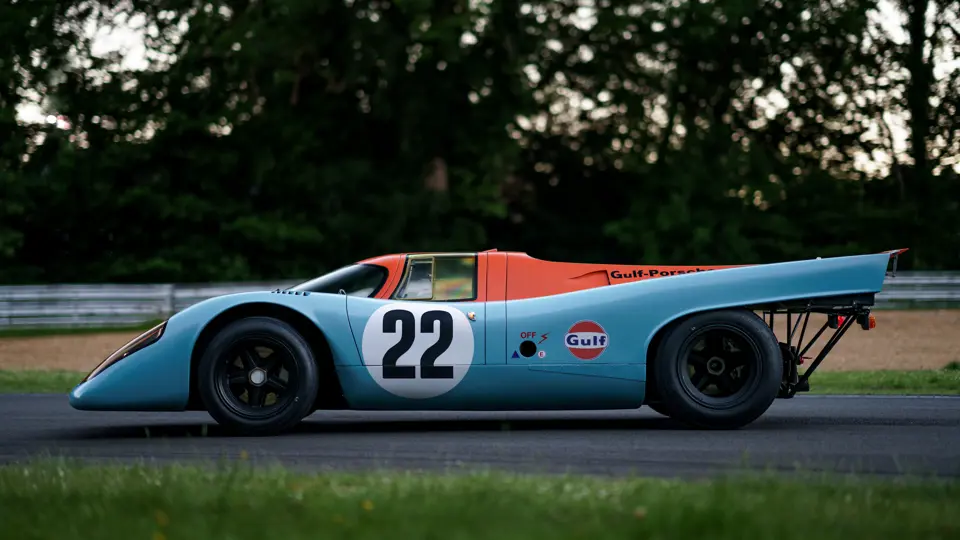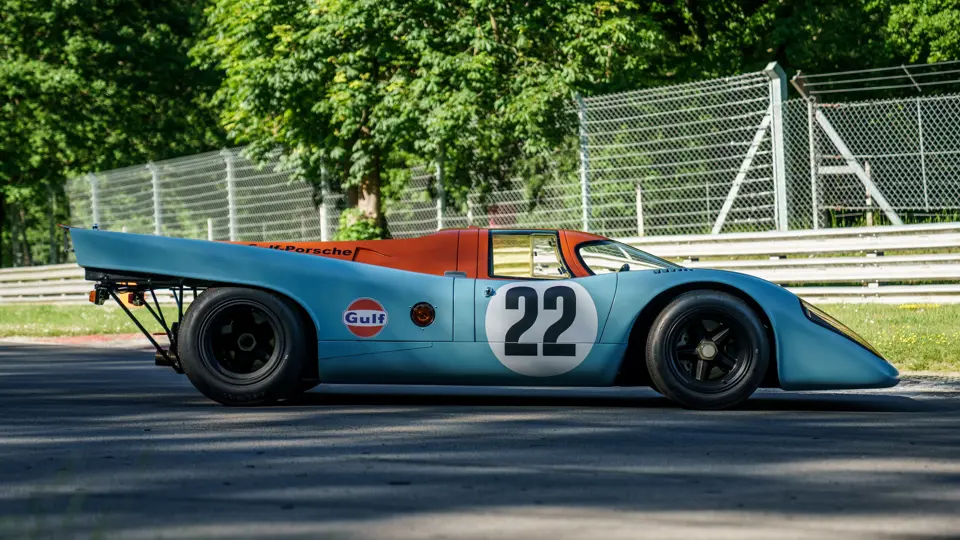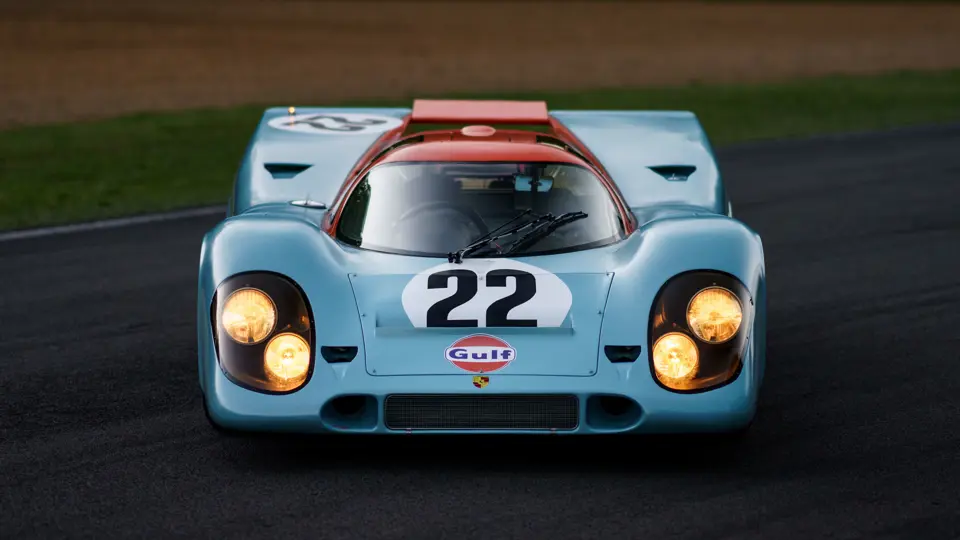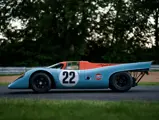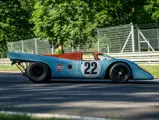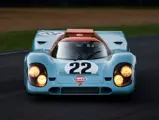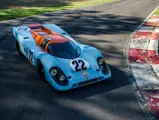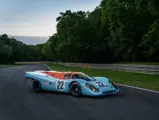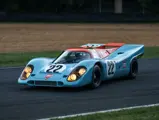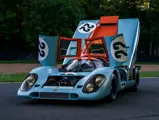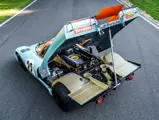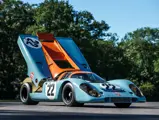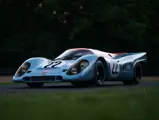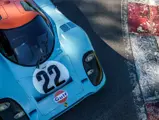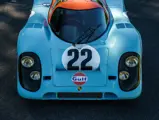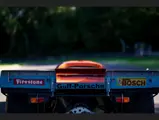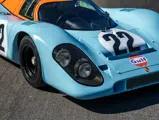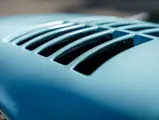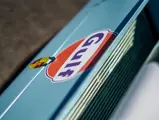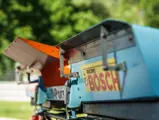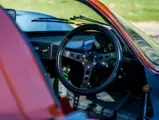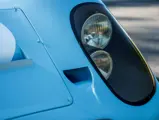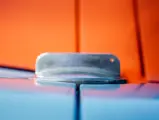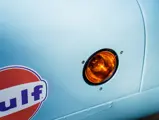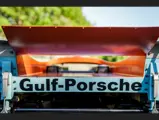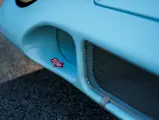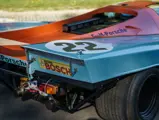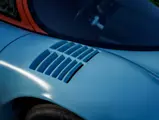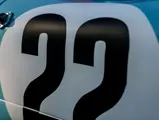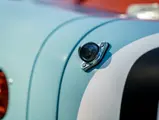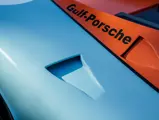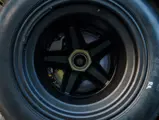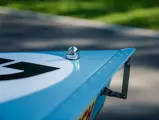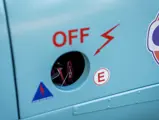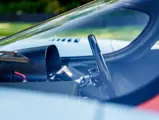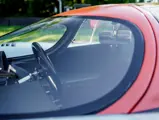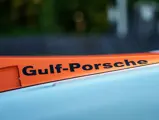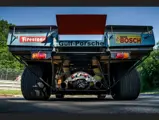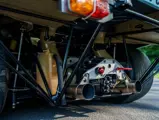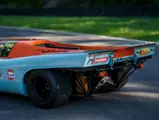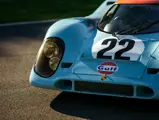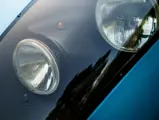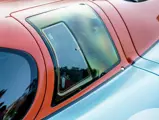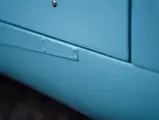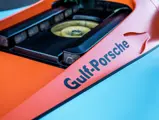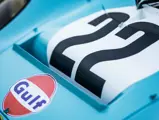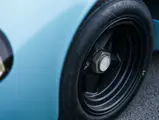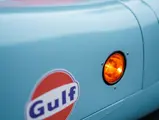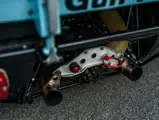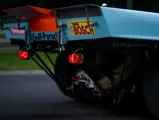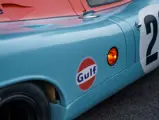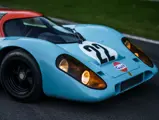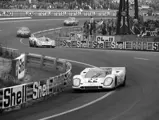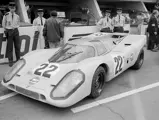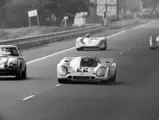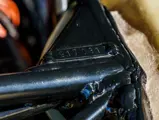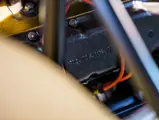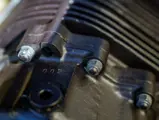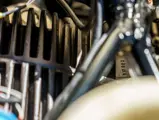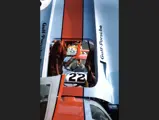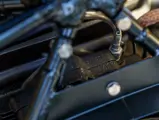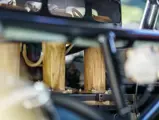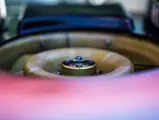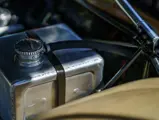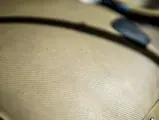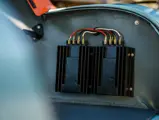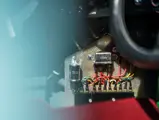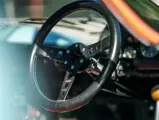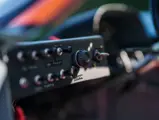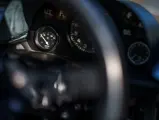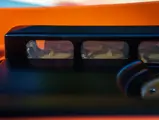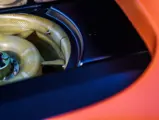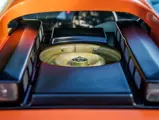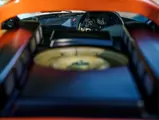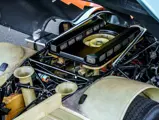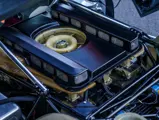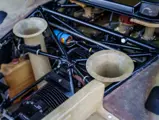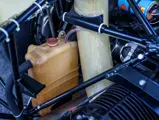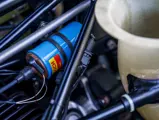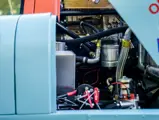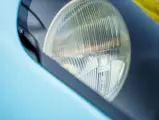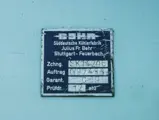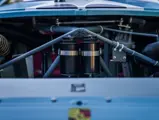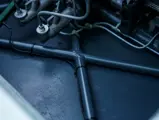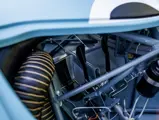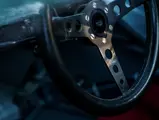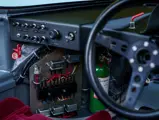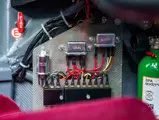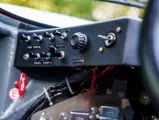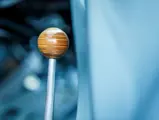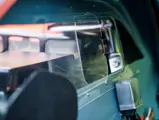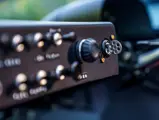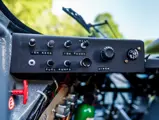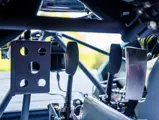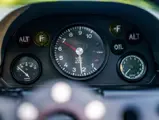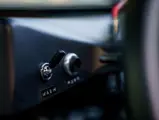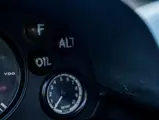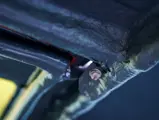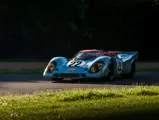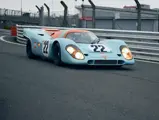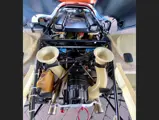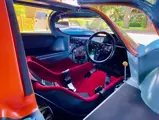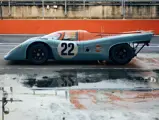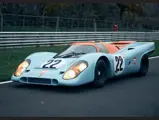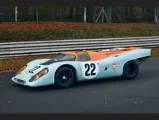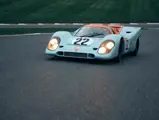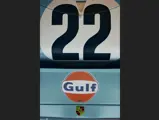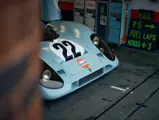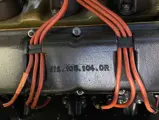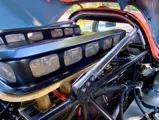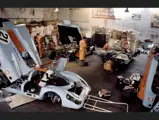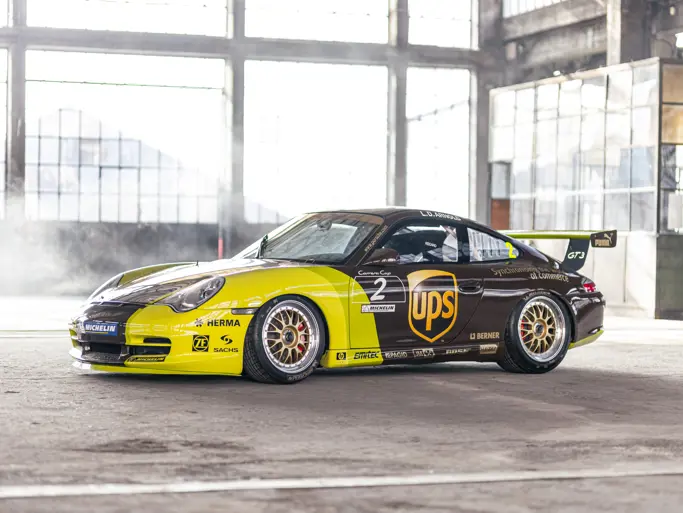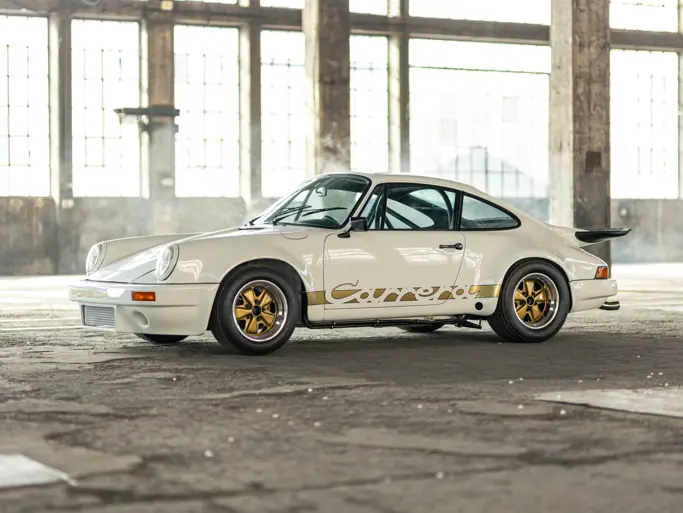
1970 Porsche 917 K
{{lr.item.text}}
$16,000,000 - $18,500,000 USD | Not Sold
{{bidding.lot.reserveStatusFormatted}}
- Delivered new to 1970 Porsche Works team JW Automotive Engineering
- Driven by David Hobbs and Mike Hailwood in the 1970 Le Mans 24 Hours
- Immortalised as the winning car in Steve McQueen’s 1971 Solar Productions film Le Mans
- Rebuilt in 917 Spyder specification at the Porsche factory in 1971
- Campaigned in Interserie in 1971-1973 by Jürgen Neuhaus, Team Shell Heckersbruch, and Gelo Racing
- Owned and raced in historic events by the late Michael Amalfitano for over 20 years
- Beautifully restored to original 917 K specification and accompanied by original Spyder body
“As these 220 mph cars screamed through the curves of Spa or thrashed through the rain at Le Mans, they provided a motor racing spectacle that had never previously been witnessed, and which at the time completely overshadowed Grand Prix racing.”
Anthony Pritchard on the Porsche 917
Having secured the 1968 World Sportscar Championship and back-to-back Le Mans victories in 1968 and 1969 for Ford, JW Automotive Engineering had emerged as both a formidable force in long-distance racing and a considerable thorn in Porsche’s side; their 1969 win—in which the Ickx/Oliver GT40 had defeated the Works Porsche 908 of Hermann/Larrousse by just 120 yards—proved a particularly bitter pill to swallow in Stuttgart. Never, in their 19 previous attempts, had Porsche come closer to winning Le Mans, and dissenting voices were now speculating whether they ever would.
With JW Automotive in need of a replacement for the venerable GT40, a deal was struck whereby the Slough-based outfit would campaign Porsche’s new 917 model in the 1970 World Sportscar Championship, critically with full factory support and operating under the Gulf-Porsche banner. The formidable John Wyer remained as team principal, ably assisted by the only marginally less intimidating former Vanwall team manager David Yorke; the team’s plan being to enter three cars at Le Mans and two at all other Championship rounds.
The relationship started spectacularly, with JW Automotive cars winning five of the first six races, including the opening round at the Daytona 24 Hours. At Le Mans, they would field two 4.9-liter-powered chassis, 917-016 and 917-017/004, for Pedro Rodriguez/ Leo Kinnunen and Jo Siffert/ Brian Redman respectively, while a new car 4.5-liter car, 917-026, would be piloted by David Hobbs and multiple Motorcycle World Champion Mike Hailwood. It is the last-named chassis which RM Sotheby’s is proud to offer for sale here.
A CHALLENGING LE MANS DEBUT
The entry for Le Mans was one of the finest ever, with eight 917s lined up against 11 Ferrari 512s. The Porsche Salzburg-entered 917 Longtail of Elford/Ahrens took pole position on 3 minutes 19.8 seconds; this was first ever sub-200 second lap of the circuit, equating to a remarkable 150.64-mph lap average. Right behind was the Works 512 of Vaccarella/Giunti, with Siffert/Redman in 3rd and Rodriguez/Kinnunen in 5th. The Hobbs/Hailwood car lined up a serviceable 10th on the grid, conscious of the changeable weather forecast and the potential for capitalizing on the misfortunes of others.
Elford took an early lead, ahead of Siffert and Rodriguez, as well as the Works Ferraris of Merzario and Vaccarella. Hobbs enjoyed a superb start, initially holding 5th place before the combination of a quick fuel stop and an early retirement for Rodriguez promoted him to 4th after two hours. Shortly after handing over to Hailwood, the pair were up to 3rd, although matters began to unravel when Hailwood inexplicably refused to pit for full wet tires as heavy rain arrived, opting to persist with intermediates instead. It was a decision which would come back to haunt “Mike the Bike,” as he lost control in the Dunlop Curve on lap 49 and slid into the stricken Alfa T33/3 of Facetti. 917-026 suffered only light damage, but it was enough to put Hailwood out of the race.
Poor Hailwood trudged back to the pits to face the famously acidic tongue of John Wyer—a man in far from the best of humour, having just witnessed two-thirds of his team retire from the race before quarter distance. Unsurprisingly, Hailwood never raced for the team again.
As if to compound Wyer’s misery, the Siffert/Redman car retired from a seven-lap lead with a blown engine just after 2:00 AM, while the Elford/Ahrens car was similarly afflicted six hours later. The Ferrari challenge all but self-destructed, paving the way for the relatively unfancied second Salzburg entry of Attwood/Hermann to take a hugely popular win. It had truly been a race of attrition, with just two 917s and two 512s classified at the finish. It is unlikely to have escaped the attention of Wyer that the winning car had qualified five places behind 917-026, and was running two places behind it at the time of Hailwood’s unscheduled exit from the race.
FROM LA SARTHE TO STEVE MCQUEEN’S LE MANS
Interestingly, a specially adapted Porsche 908 camera car had circulated throughout the 1970 race capturing live footage for use in a film being made by Steve McQueen’s Solar Productions company. Appropriately and simply entitled Le Mans, this Lee H. Katzin-directed film mirrored the events of the actual race, depicting Porsche’s successful but fraught quest for victory at La Sarthe.
A passion project for McQueen, a noted and capable enthusiast of racing on both two and four wheels, Le Mans notoriously spared no expense in the pursuit of an absolutely accurate depiction of the trials, tribulations, and unparalleled excitement of top-level endurance racing. The film’s final cut interspersed action sequences from the actual race with studio scenes and, while of limited merit in terms of either script or acting, was rightly lauded for its cinematography and realism.
The plot places McQueen’s character, driver Michael Delaney, behind the wheel of multiple Porsches over the course of the film, but it is chassis 917-026 that is, ironically, immortalized on celluloid as the winner of the race in Le Mans’ alternative version of events.
917-031/026’S ROUSING SECOND CAREER
After Le Mans, 917-026 was returned to JW Automotive’s base, where it was dismantled and a new car constructed around a factory-sourced replacement chassis, designated 917-031. To comply with the onerous international customs regulations of the day, this new chassis was re-numbered as “026” so as to tally with all the relevant customs paperwork held by the team. This was documented in a letter dated 10 July 1970 from JWAE to Porsche’s 917 program director Helmut Flegl. The newly reconstructed car returned to action and continued as a JW Automotive team car through 1970 and 1971.
Meanwhile, the original ex-Hobbs/Hailwood chassis was renumbered as “031” and returned to Porsche, where it was repaired and placed into the spare parts stock. The chassis was then used by Porsche to build up a 917 Spyder in early 1971, using a 5.0-liter engine also numbered 917-031, which it retains to this day; the conversion to Spyder configuration was not unusual at the time. In accordance with prevailing Porsche chassis numbering convention this car is now referred to as 917-031/026.
It is pertinent to remember that chassis re-numbering in period was commonplace amongst most, if not all, racing car manufacturers, given the need to transport cars across customs borders between race meetings at short notice. Indeed it is widely accepted that at least 14 surviving 917s have had their chassis re-numbered in this way at some stage in their contemporary careers. Notably, the entire history of 917-031/026 from new is firmly established, and has been authoritatively recorded in Walter Näher’s Porsche 917: Archive and Works Catalogue, 1968-1975 and Jay Gillotti’s Gulf 917.
Once rebuilt, 917-031/026 was delivered to Team Shell Heckersbruch for the start of the 1971 Interserie Championship, with reigning champion Jürgen Neuhaus its designated driver. Resplendent in an eye-catching red and yellow psychedelic color scheme in deference to the team’s major sponsor, the new partnership started positively with Neuhaus claiming victory in the non-Championship Nürburgring 300 KM in April, ahead of Teddy Pilette’s McLaren M8C-Chevrolet. Another season highlight was a non-championship win at Mainz-Finthen, where Neuhaus defeated Michel Weber’s similar 917 Spyder.
Neuhaus’ 5th-place finish at the 1972 season’s opening race at the Nürburgring would prove to be his final outing in 917-031/026, as the car was sold to wealthy German amateur Georg Loos’ Gelo team in mid-1972. Driver Frans Pesch acquitted himself well in the car at the Norisring, finishing fourth behind the 917/10s of Kinnunen and Kauhsen and the McLaren M8F of Helmut Kelleners.
For 1973, Gelo replaced Pesch with Jürgen Barth; Loos himself opted to focus on his new 917/10. Against the backdrop of an increasing number of turbocharged cars, Barth’s performances were highly impressive, with 5th places at the Norisring and Hockenheim—behind three turbo Porsches on both occasions—rightly receiving plaudits.
The skill of 917-031/026’s drivers, as well as the superb engineering underpinning the chassis itself, kept the naturally aspirated car surprisingly competitive for far longer than might have been expected in the face of fierce forced-induction competition. On 30 September, however, 917-031/026 competed in the final contemporary race of its illustrious career. Appropriately, on home turf at Hockenheim, Barth finished 7th, behind no less than four 917/10s, one 917/30, and a Ferrari 512M.
AN HISTORIC RACER PAR EXCELLENCE
In 1974, 917-031/026 was sold to the Chandon family, owners of the eponymous Champagne house, who appear to have used the car comparatively little and kept it at Mas du Clos, the idyllic home and museum of the late French Ferrari collector Pierre Bardinon. Interestingly, images exist of the car in Bardinon’s museum still resplendent in Loos’ customary colors of red with a yellow stripe, but wearing the decals of the team’s 1974 sponsors Polifac car care products, suggesting it may have possibly been used by Gelo either in competition or for publicity purposes beyond 1973.
In 1987, the Chandon family sold the car to Floridian Porsche collector Mike Amalfitano. Sympathetic recommissioning of the car was entrusted to Bill Bradley Racing, the restoration shop run by German-domiciled Briton Bradley who had himself raced privateer prototype Porsches in the 1960s. Bradley’s loyal lieutenant Paddy O’Grady, a former Porsche Works mechanic, restored the chassis of the car, noting several stress cracks as well as traces of “Gulf Orange” overspray in the process. The engine was rebuilt to 5.4 liters by former factory 917 engine-builder Gustav Nietsche and tested on the Porsche race department dyno, giving 628 horsepower.
Amalfitano cherished the car, which could easily be considered the gem of a significant collection of competition Porsches—including a works 1967 910 and 1988 962 Group C coupe—for the next 22 years. In this car, he competed in U.S. vintage races including the Porsche 50th Anniversary races at Watkins Glen in 1998 and Rennsport Reunion III at Daytona in 2007. Sadly, he died suddenly in 2009, and his family took the decision to disband the collection in 2010. Briefly passing into the collection of accomplished U.S. vintage racer Aaron Hsu thereafter, it was acquired by the consignor in 2012 and has formed the centerpiece of his highly significant Le Mans-focused collection ever since.
While under the care of the present owner, an exacting restoration was carried out by leading European race car restorer Paul Lanzante of the United Kingdom-based Paul Lanzante Limited. Lanzante, himself a Le Mans winner as team principal for the Tokyo Ueno Clinic McLaren F1 in 1995, was ideally suited to the task. In addition to his ongoing involvement with the preparation of both modern and historic McLarens, Lanzante’s portfolio of completed restorations includes an enviable range of some of the finest vintage race cars ever built. Notably, these cars emerge from the shop returned to their former glory visually—and also ready to run on-track, just as their original designers intended.
The work from which this 917 K benefitted was no different. Completed without regard to cost and with access to many correct and original NOS components, the scope of the restoration included reinstating the 917 K coupe body and returning the car to the specification in which it competed at Le Mans in 1970; its Interserie-era numbers-matching engine remains in its 5.4-liter form. The results are impressive in every sensory regard, from the stunning, accurate historical presentation and attention to detail to the mechanical preparation that is headlined by the unmistakable symphony of the flat-12-cylinder at full revs.
Significantly, the original 917 Spyder bodywork has been carefully preserved and accompanies the car, should the fortunate new owner wish to revert it to 1971 Interserie specification at any time. Further, numerous spare parts, additional hardware, tools, and ancillary components are offered with the lot (please contact an RM Sotheby’s representative for a comprehensive list).
Active in and, crucially, eligible for World Sportscar Championship events for just three seasons, the Porsche 917 enjoyed arguably the briefest front-line career of any of the all-time Sportscar greats; implausibly so in comparison to the likes of the Alfa Romeo 8C, Jaguar D-type and its spiritual successor, the remarkable Porsche 956/962 series. Yet few cars, if any, are remembered with greater awe and reverence than the 917. The car which every driver was keen to avoid in early 1969 quickly metamorphosed into the one they simply had to drive in 1970 and 1971—a car which won five out of six Sportscar “Classics” in those two years, and both World Sportscar Championships.
Immaculately restored to the highest modern standards by an authority on vintage racing sports cars and boasting just four private owners since the conclusion of its competition career some 48 years ago, there can be few better-documented or more desirable examples of the mighty Porsche 917 than 917-031/026. Arresting even when standing still and utterly spectacular when in motion, this car has spent the past several decades in the collections of true connoisseurs, displayed alongside a hand-picked selection of some of history’s finest racing machines; it is fully worthy of similar honors going forward.
Resplendent in its epochal Gulf colors once again, as it appeared in both the 1970 24 Hours of Le Mans and Steve McQueen’s celebrated eponymous racing film, 917-031/026 evokes memories of some of the finest talents and minds of the golden era of sports car racing.
Please note that accompanying spare parts will remain in the UK and can be shipped to the buyer post-sale at the buyer’s expense. For additional information on this car’s restoration, as well as a complete list of spare parts, please contact an RM Sotheby’s representative.
| DATE | EVENT | DRIVER | NUMBER | RESULT |
|---|---|---|---|---|
| 14 June 1970 | Le Mans 24 Hours | David Hobbs/Mike Hailwood | 22 | DNF |
| 12 April 1971 | Nürburgring 300 KM | Jürgen Neuhaus | 1 | 1 |
| 25 April 1971 | Krähberg-Rennen | Jürgen Neuhaus | 1 | 1 |
| 02 May 1971 | Interserie Imola | Jürgen Neuhaus | 1 | DNF |
| 06 June 1971 | Interserie Zolder | Jürgen Neuhaus | 1 | 4 |
| 20 June 1971 | Internationales Hainz-Finthen | Jürgen Neuhaus | 1 | 1 |
| 04 July 1971 | Interserie Hockenheim Südwestpokal | Jürgen Neuhaus | 1 | 5 |
| 11 July 1971 | Interserie Norisring | Jürgen Neuhaus | 1 | DNF |
| 18 July 1971 | Oberpfalz | Jürgen Neuhaus | 155 | 1 |
| 25 July 1971 | Eller-berg-Rennen | Jürgen Neuhaus | 188 | 1 |
| 22 August 1971 | Interserie Keimola | Jürgen Neuhaus | 1 | 4 |
| 29 August 1971 | Mendig - Sports Racing Prototypes | Jürgen Neuhaus | 1 | 1 |
| 12 September 1971 | 500 KM Interserie Imola | Jürgen Neuhaus | 1 | DNF |
| 03 October 1971 | Interserie Hockenheim Preis von Baden-Württemberg | Jürgen Neuhaus | 1 | 4 |
| 10 October 1971 | Sauerland | Jürgen Neuhaus | 1 | 1 |
| 03 April 1972 | Nürburgring 300 KM | Jürgen Neuhaus | 6 | 5 |
| 06 August 1972 | Interserie Norisring | Franz Pesch | 29 | 4 |
| 01 October 1972 | Interserie Hockenheim Preis von Baden Württemberg | Franz Pesch | 30 | 7 |
| 24 June 1973 | Interserie Norisring | Jürgen Barth | 23 | 5 |
| 15 July 1973 | Interserie Hockenheim Südwestpokal | Jürgen Barth | 23 | 5 |
| 19 August 1973 | Interserie Misano, Santa Monica | Jürgen Barth | 23 | 6 |
| 30 September 1973 | Interserie Hockenheim Preis von Baden-Württemberg | Jürgen Barth | 23 | 7 |





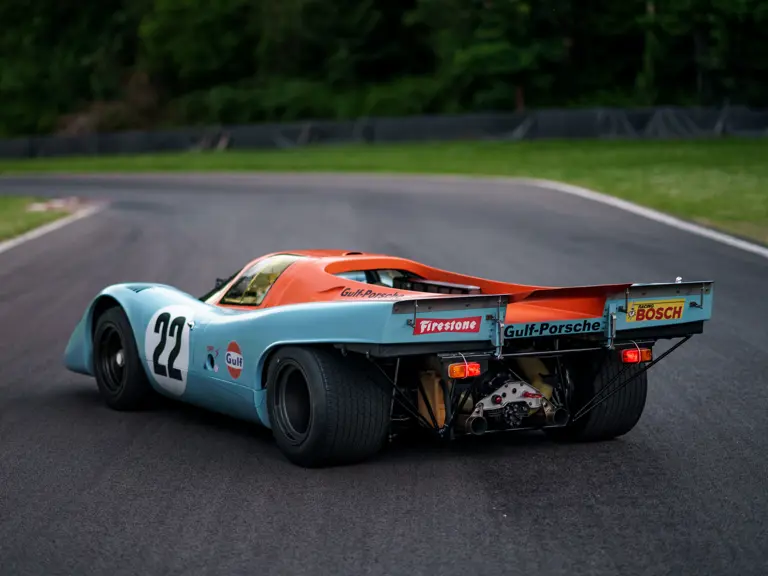
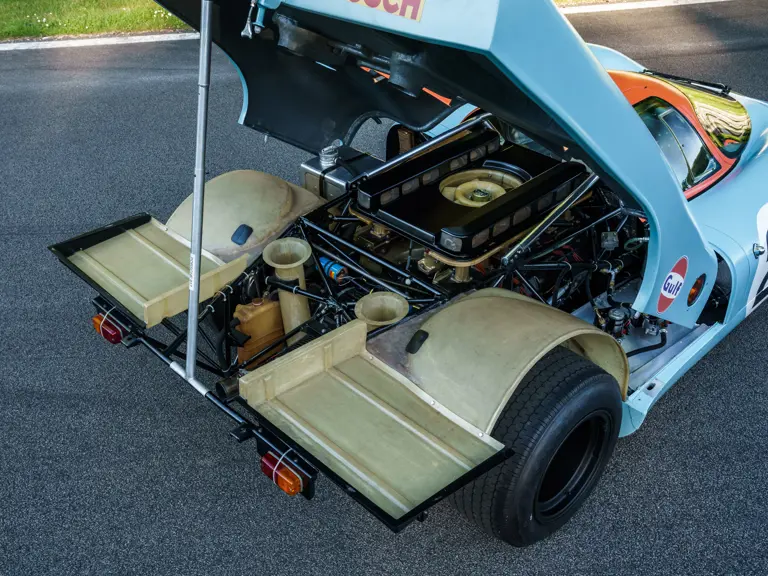
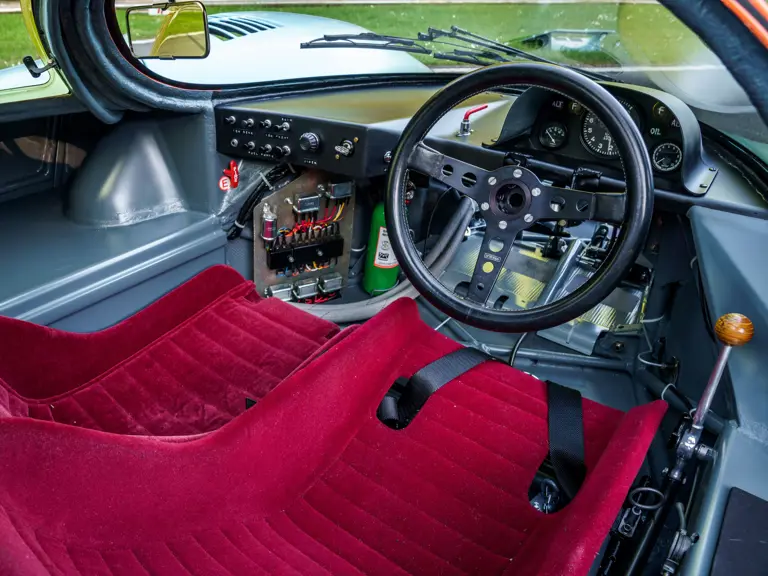

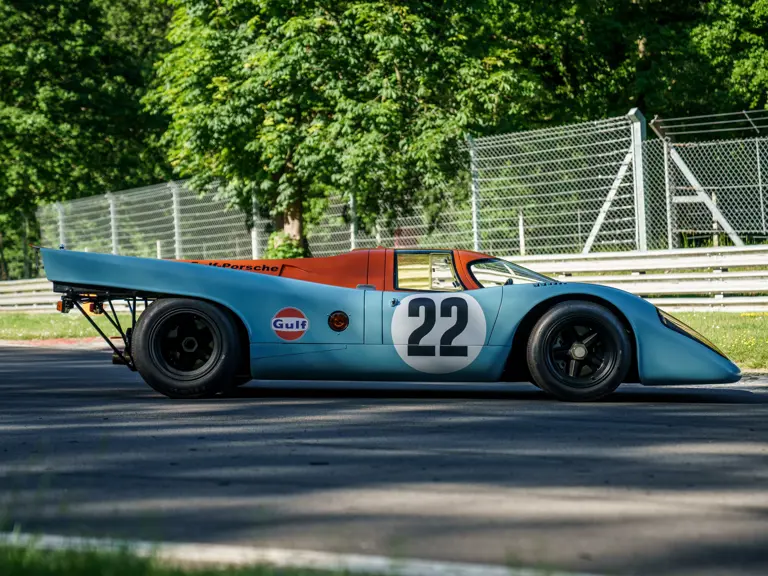
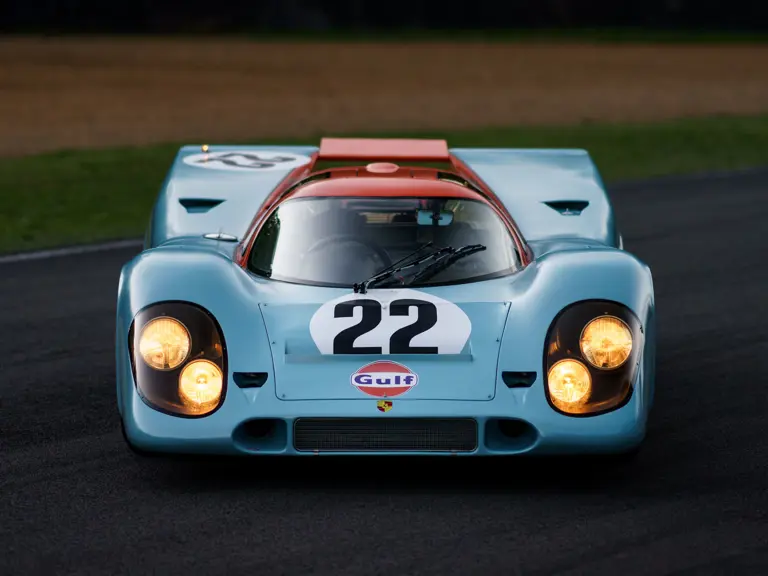
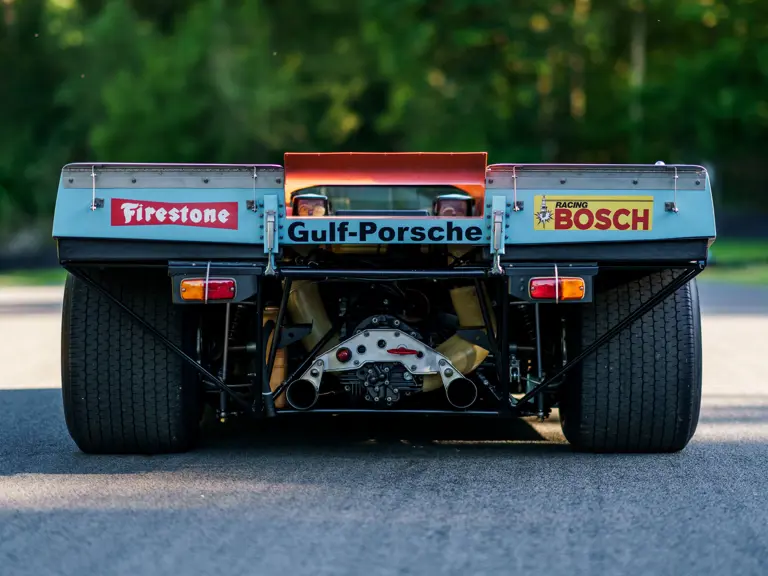
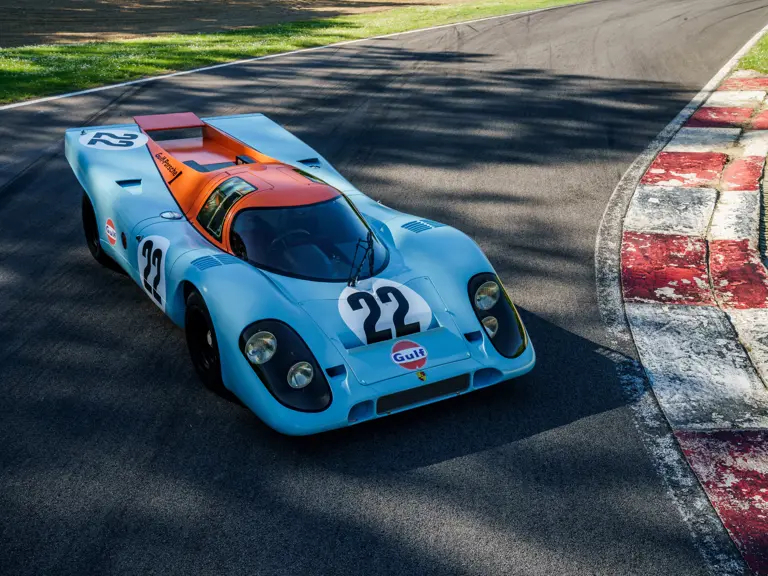
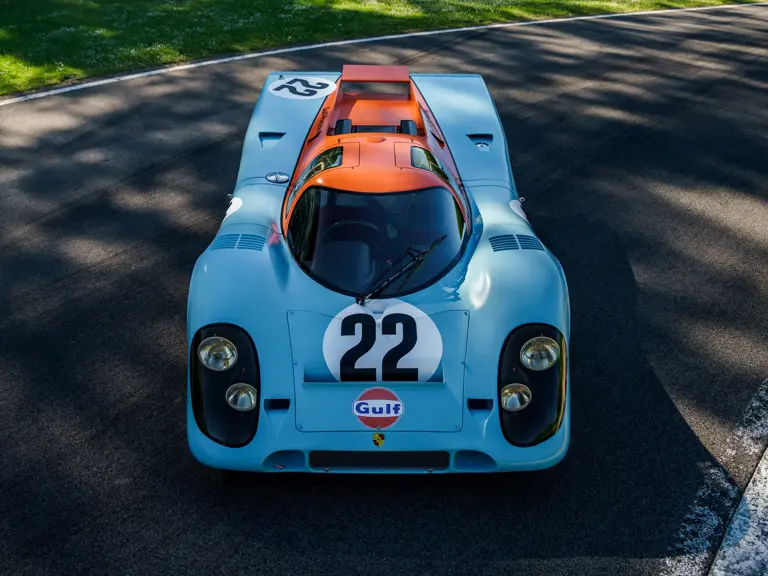
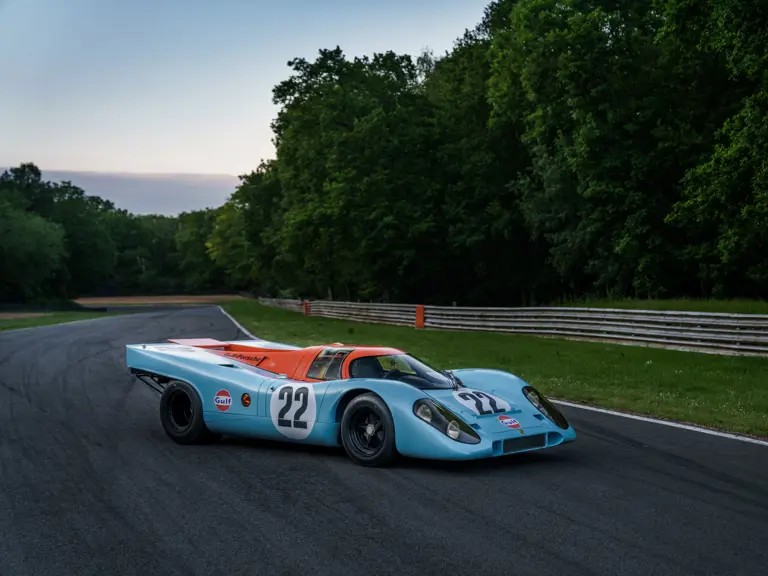
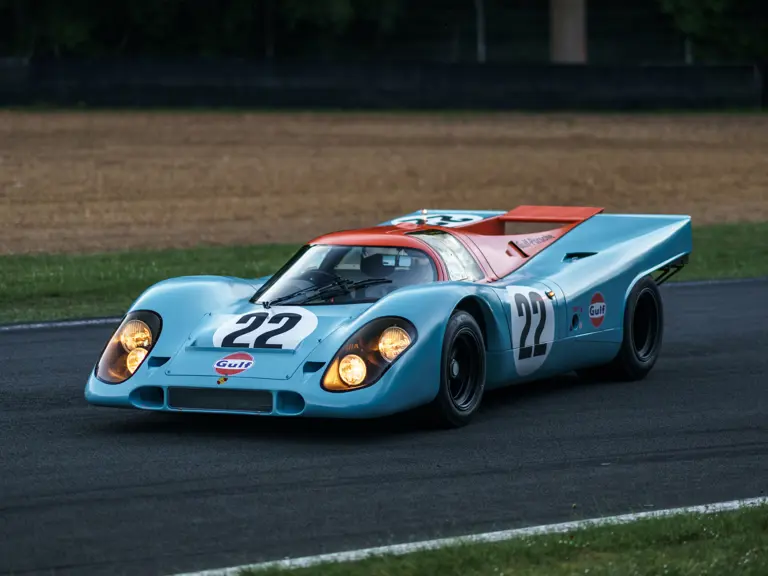
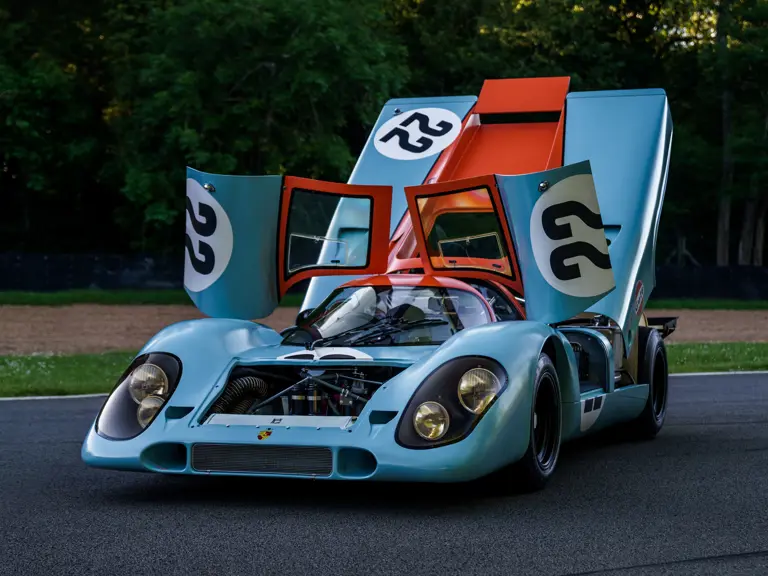
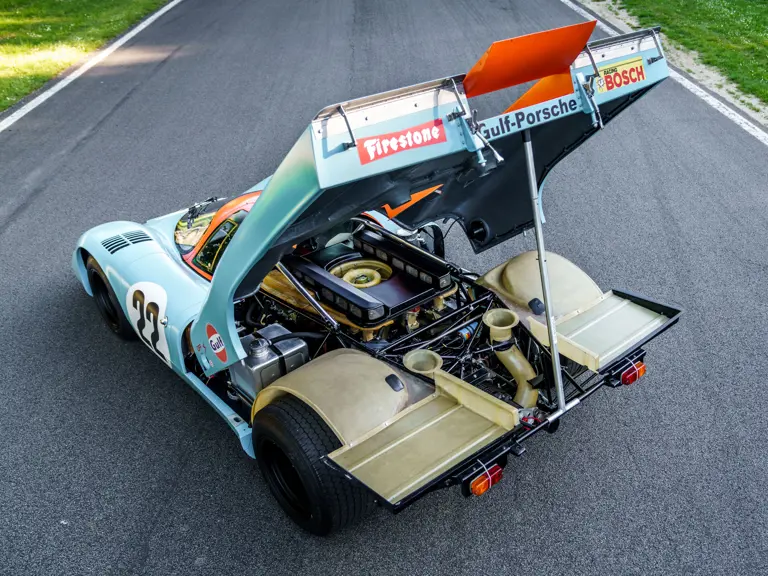
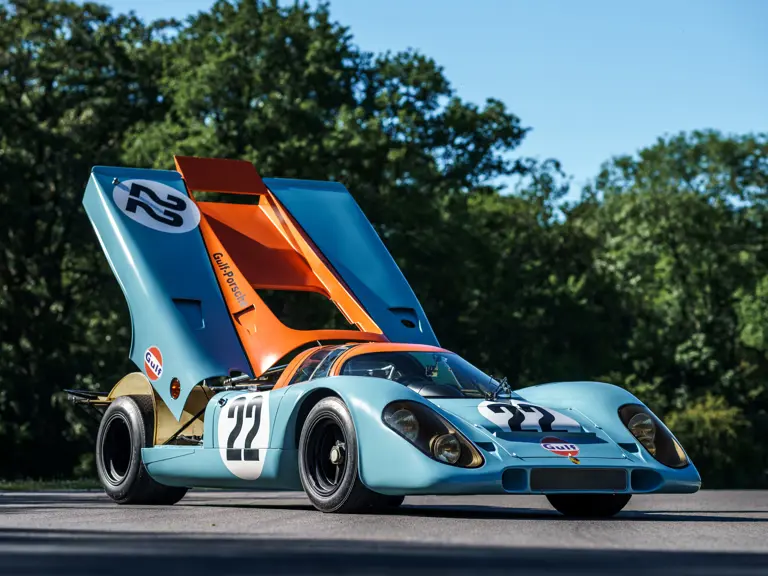

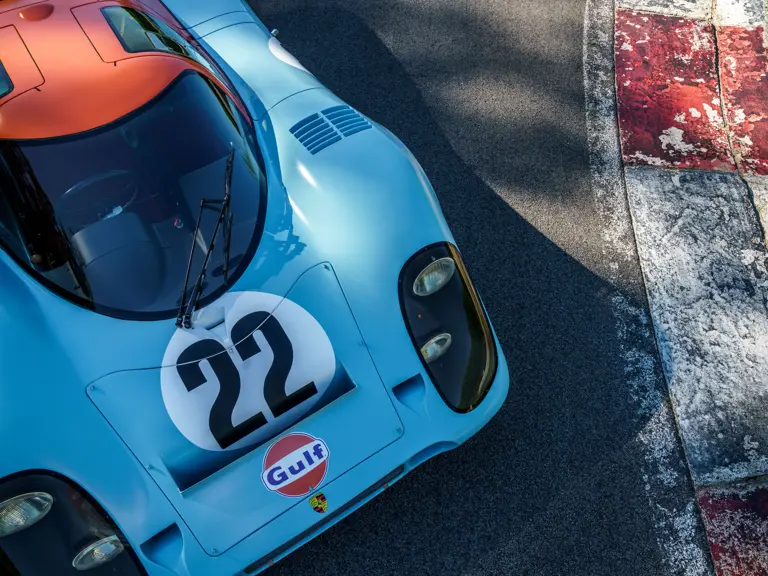

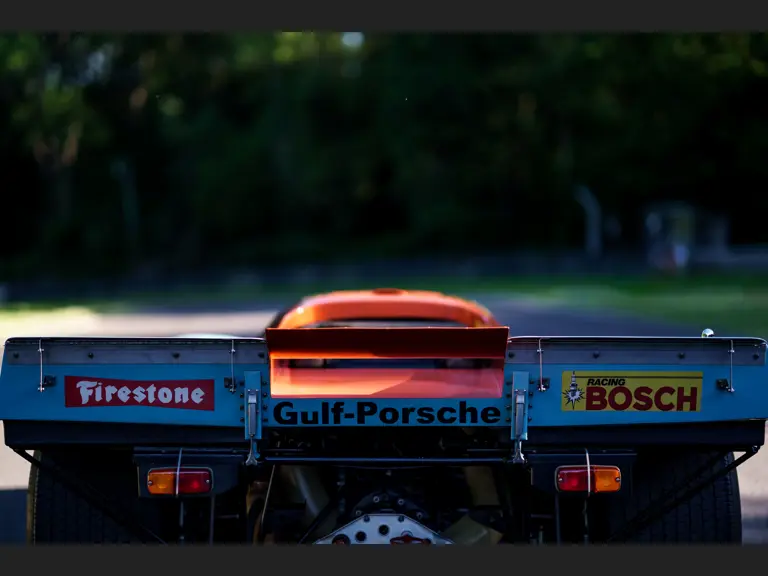
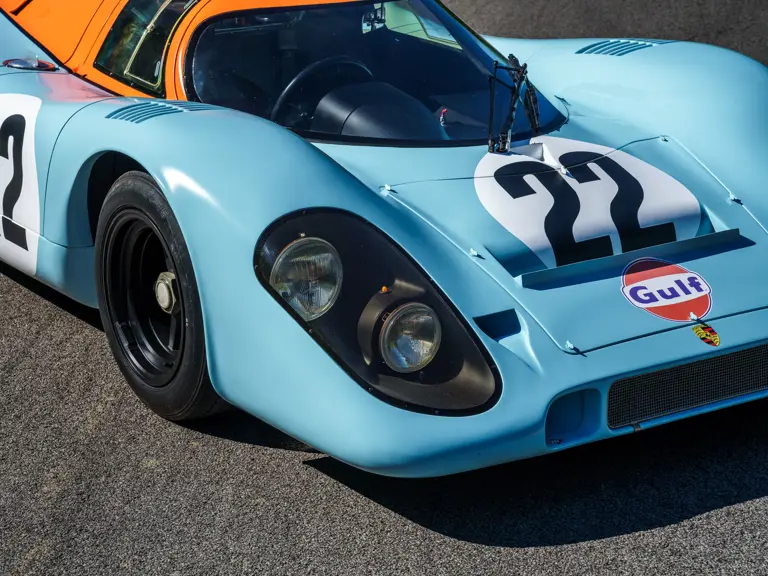
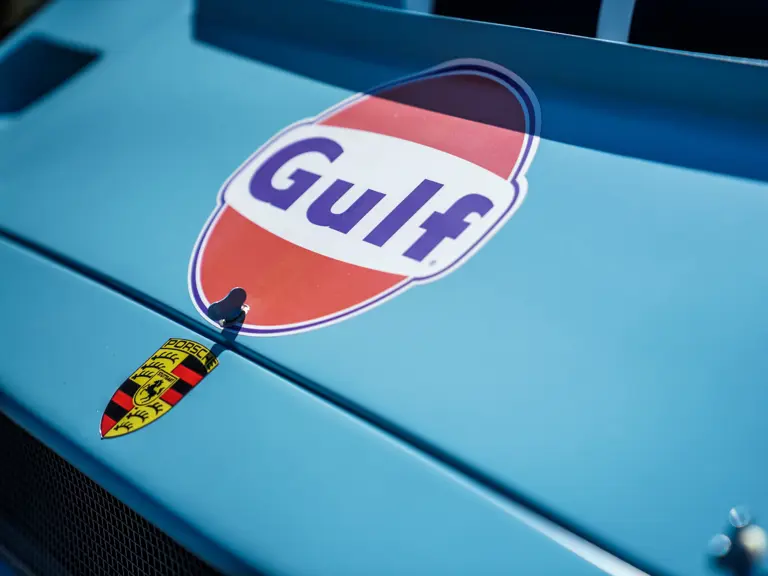
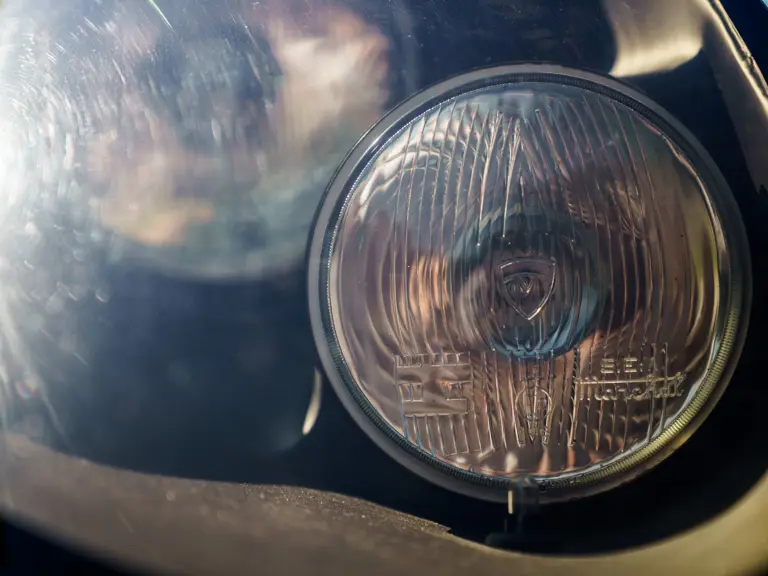
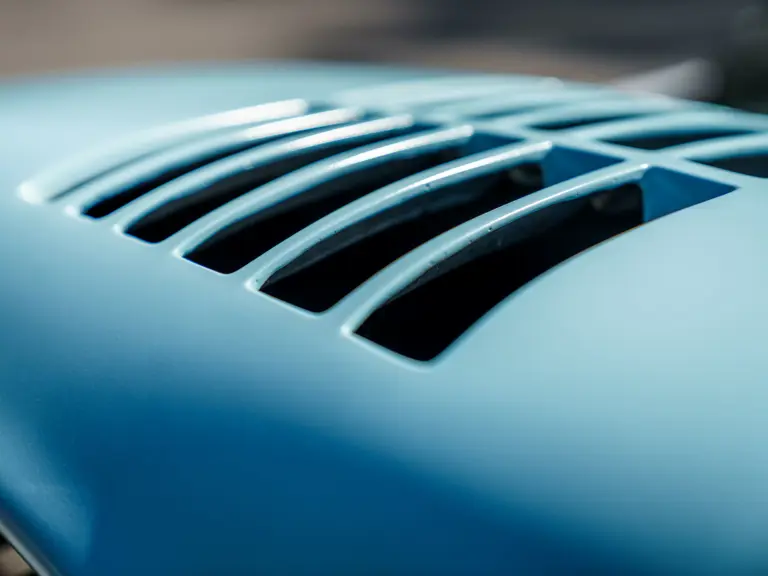

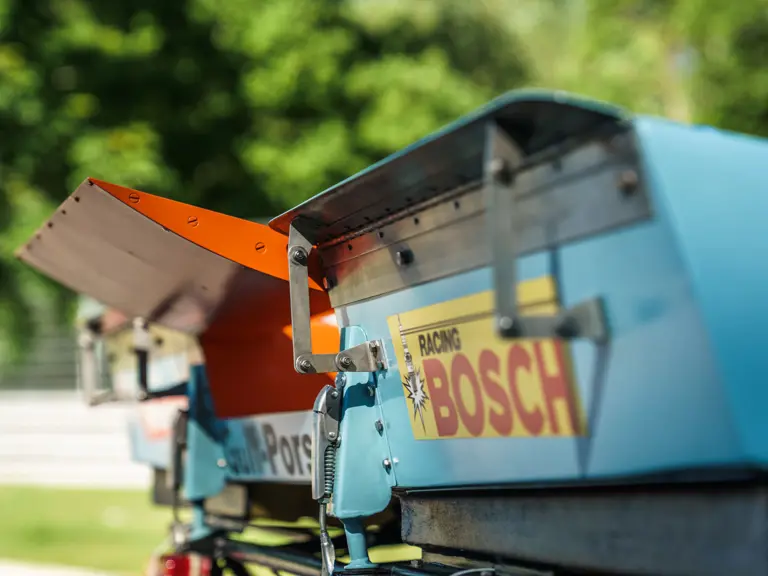
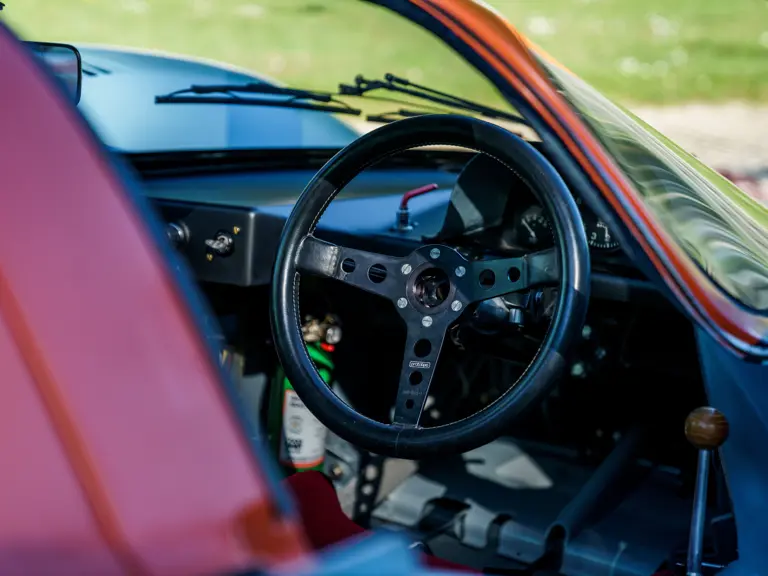
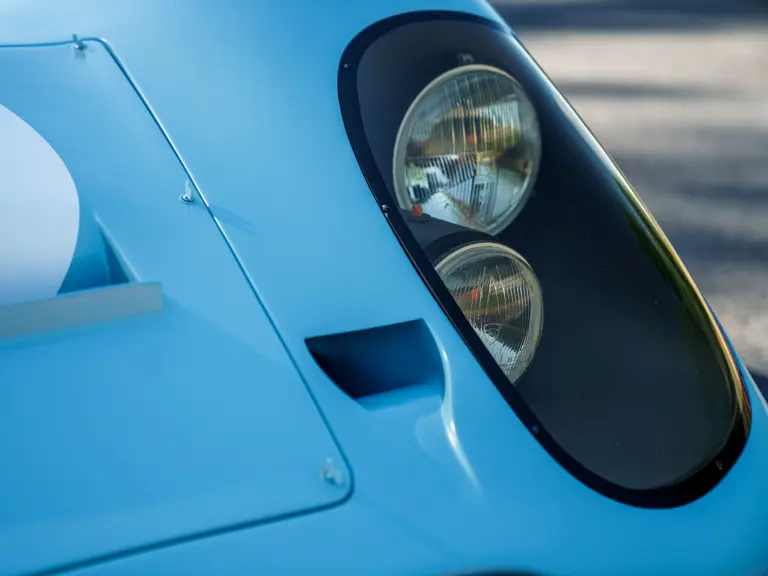
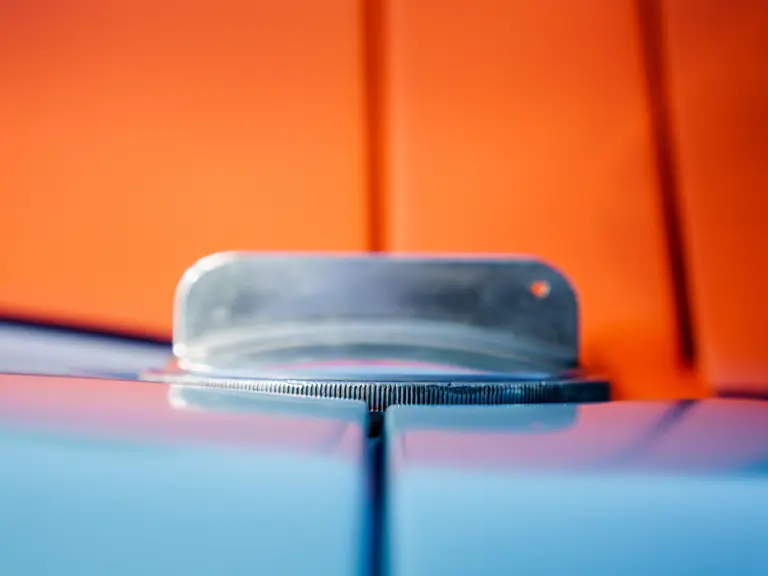
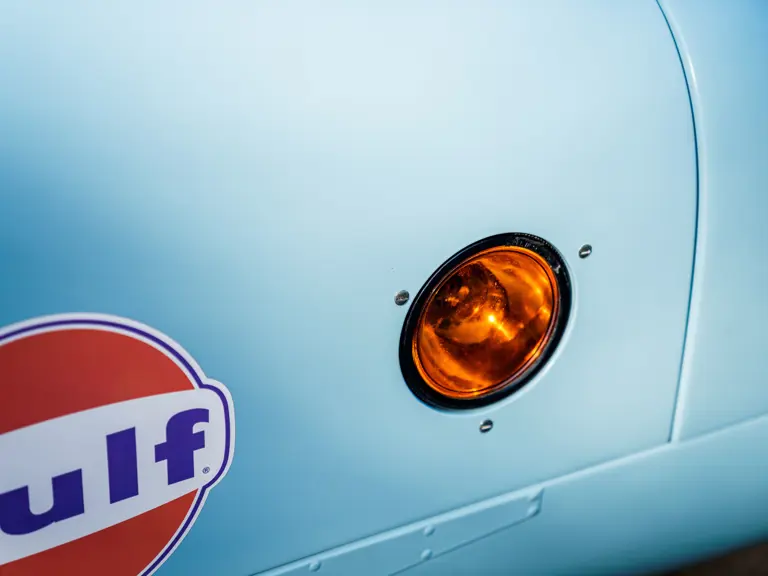
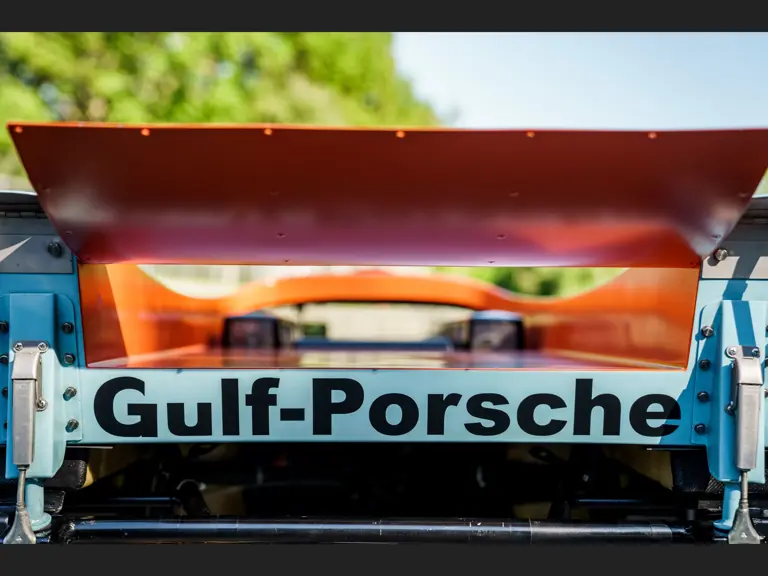
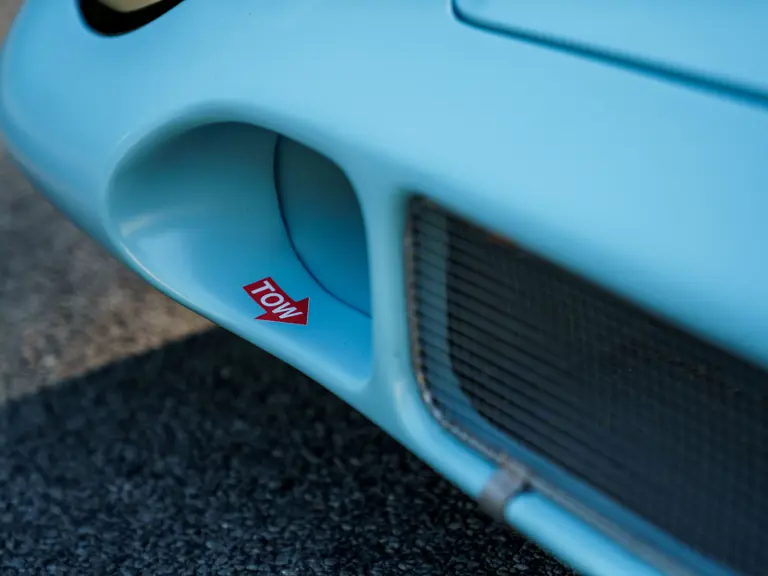
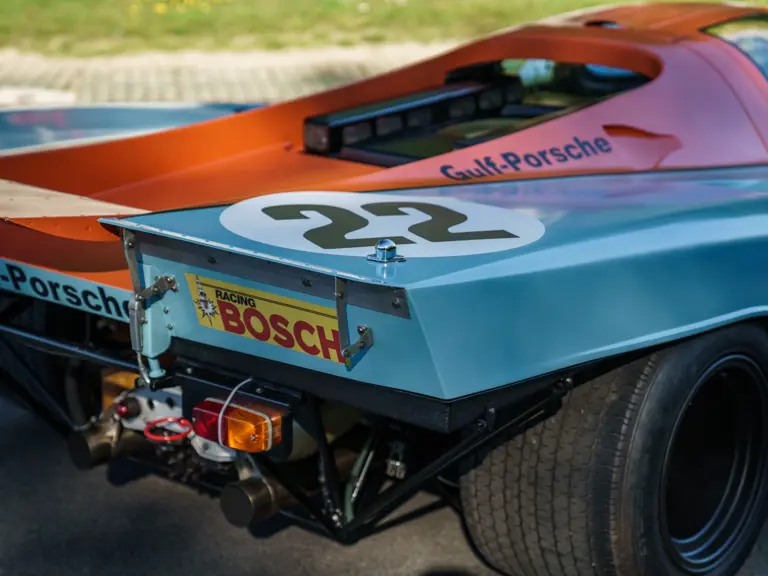
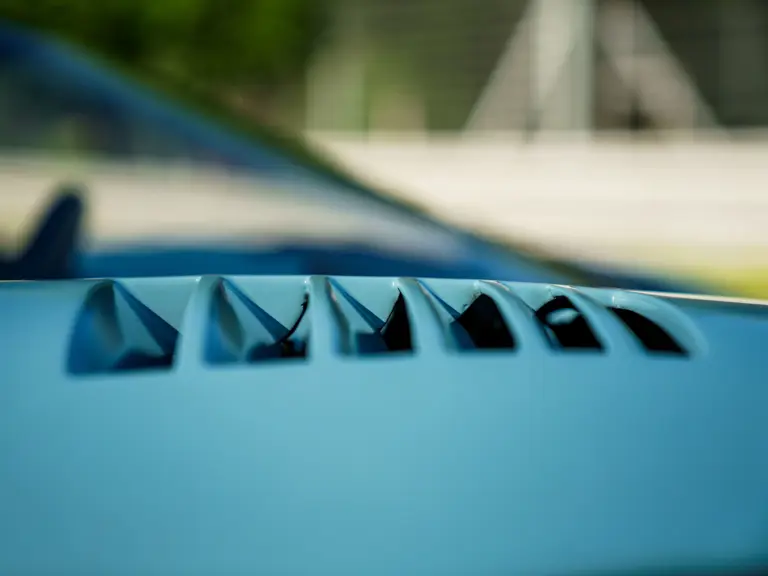
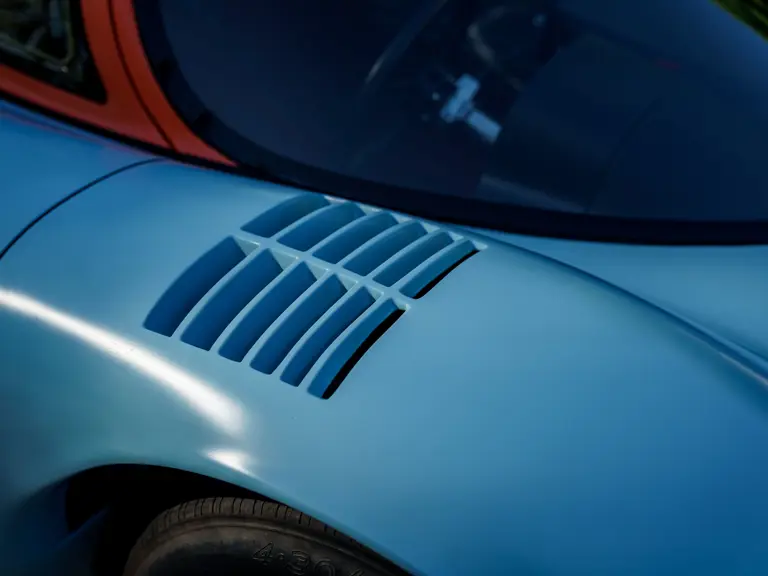
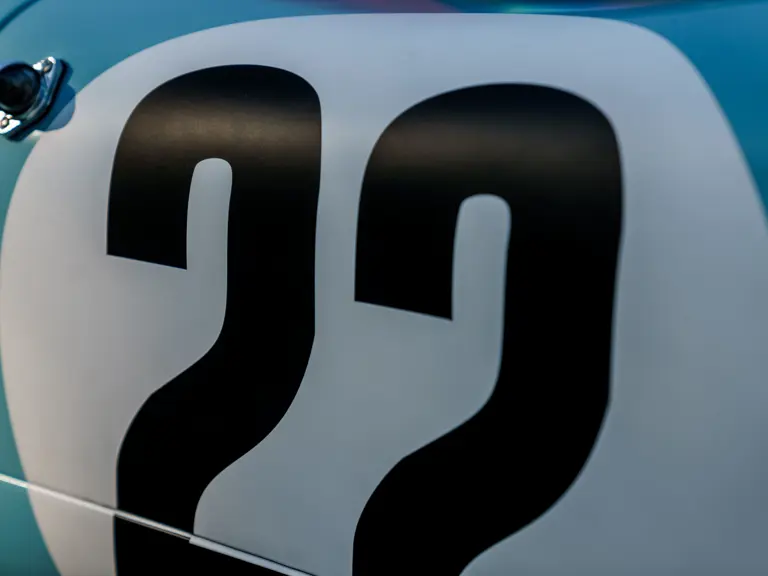
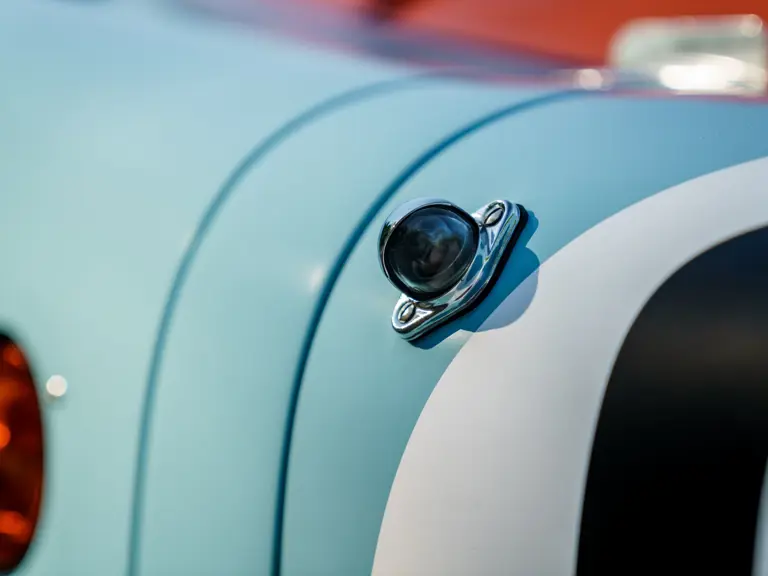
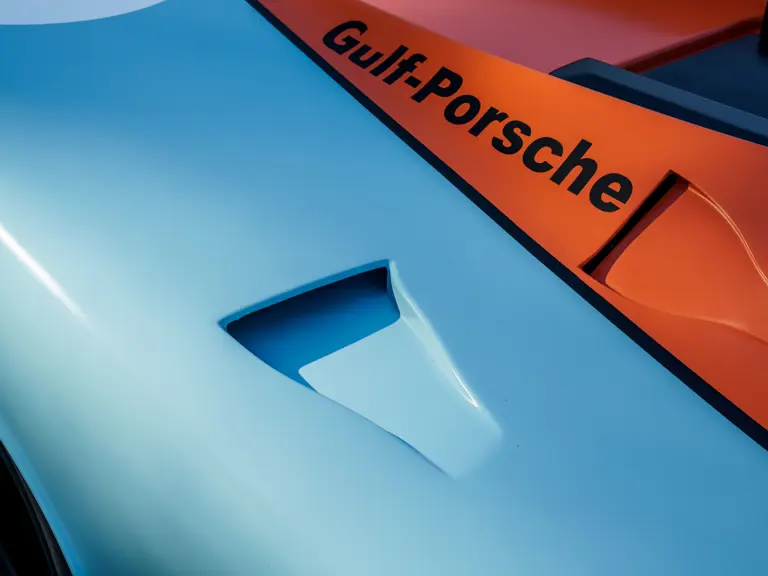
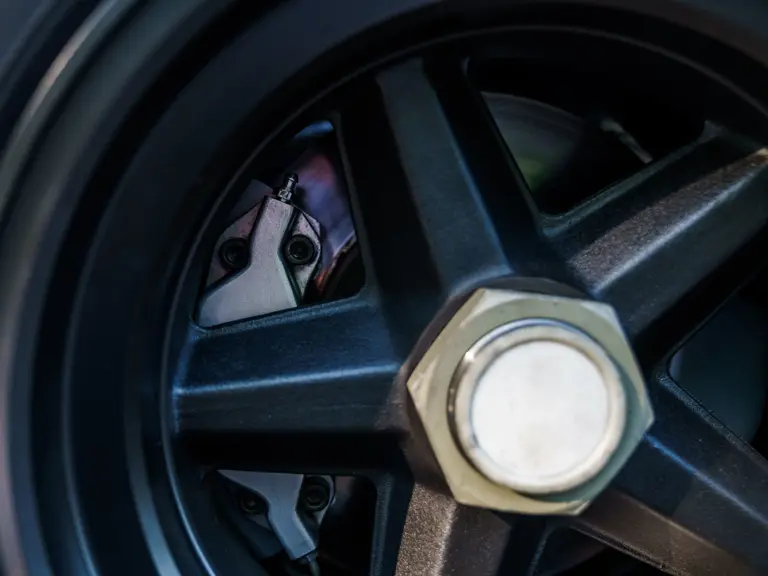
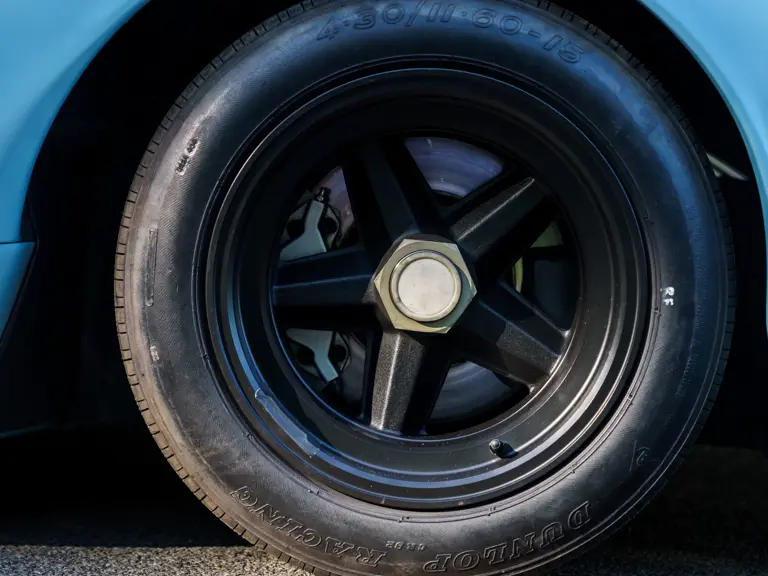
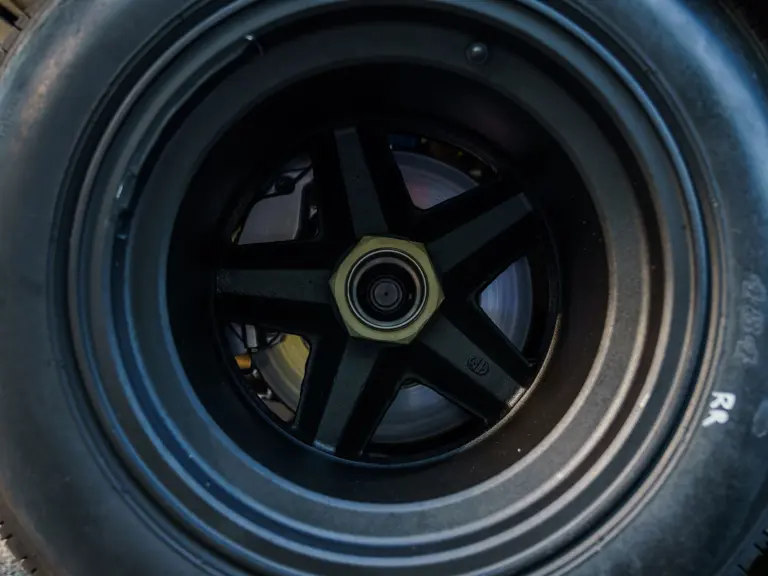

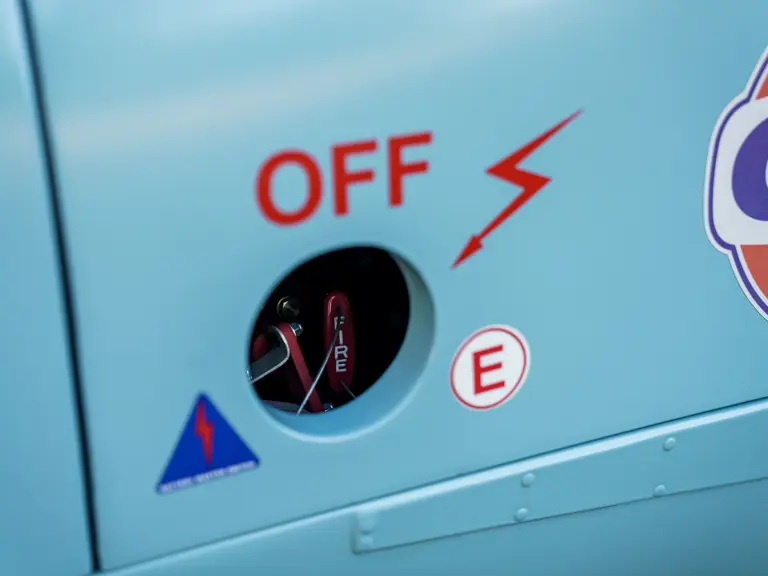


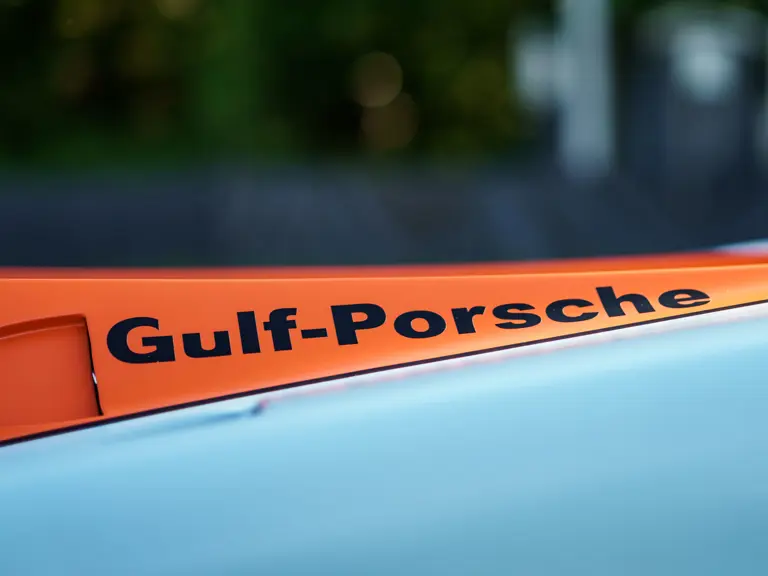
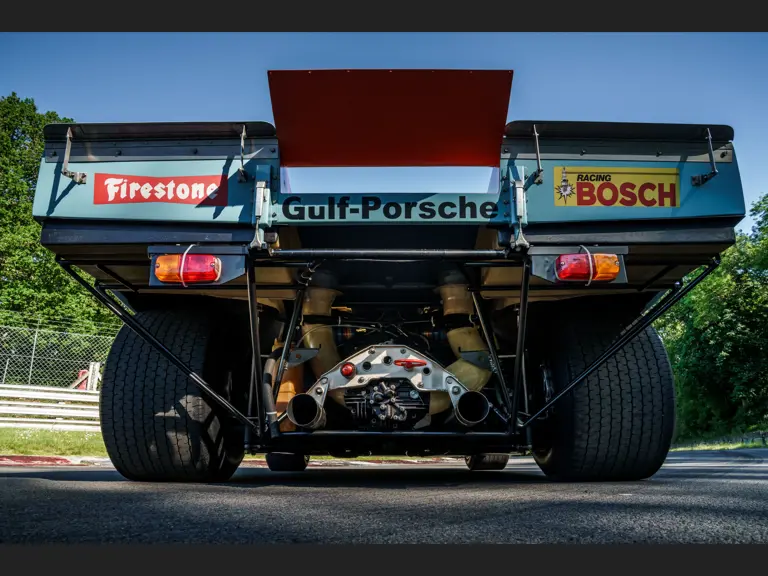
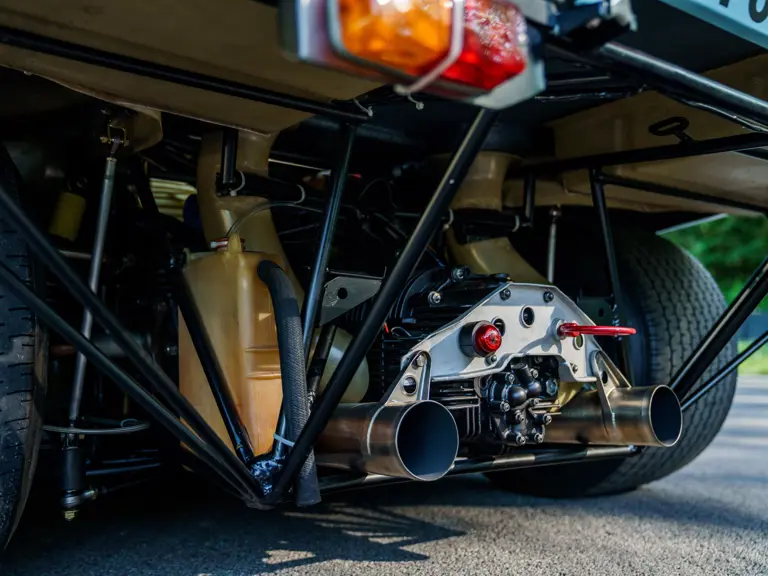
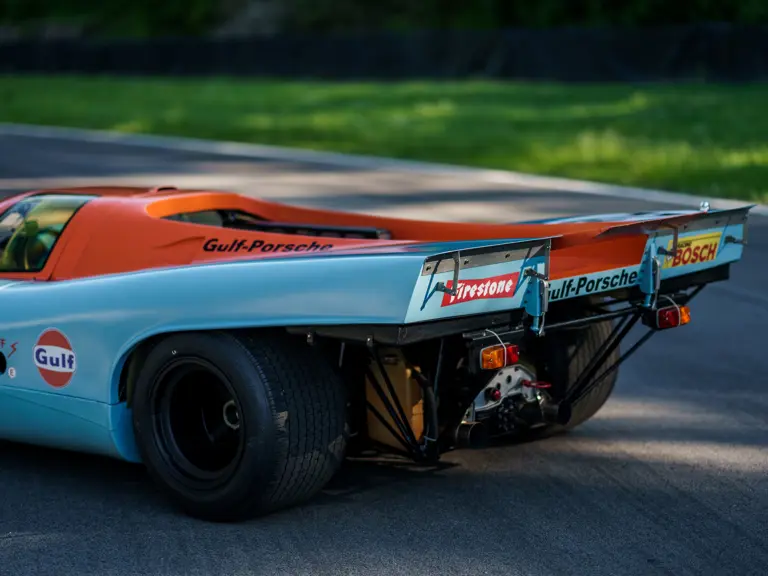
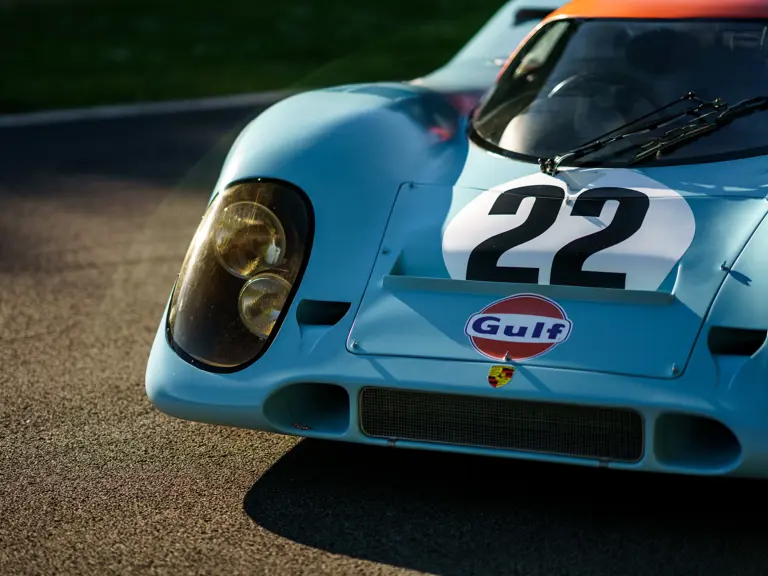
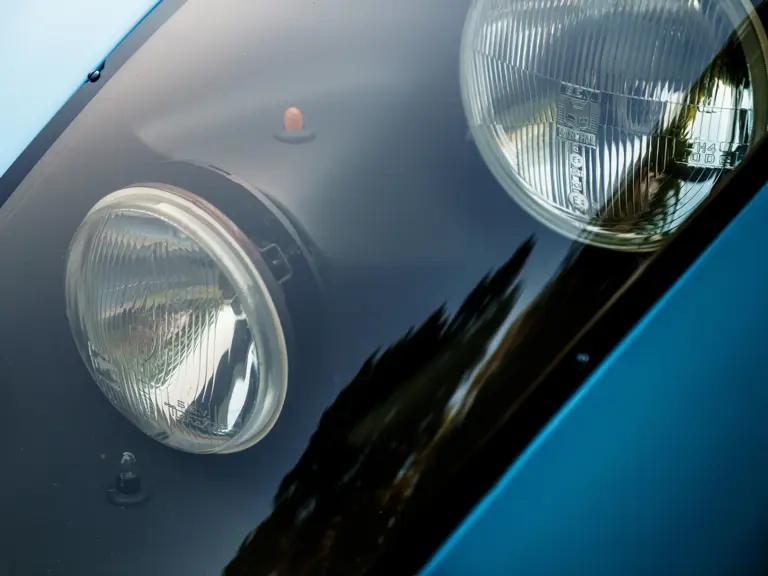
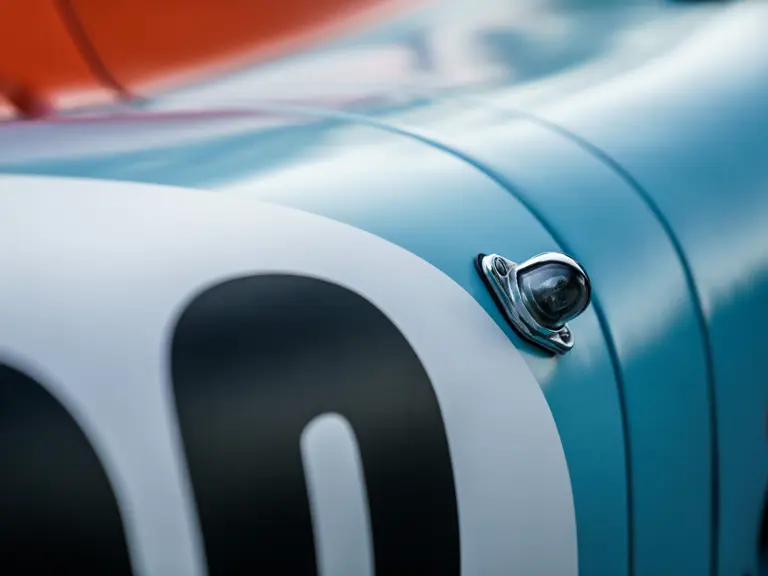
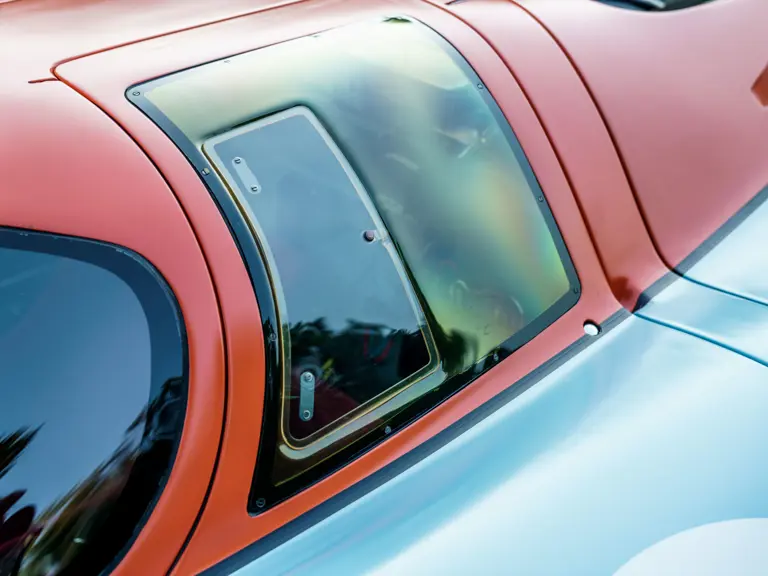
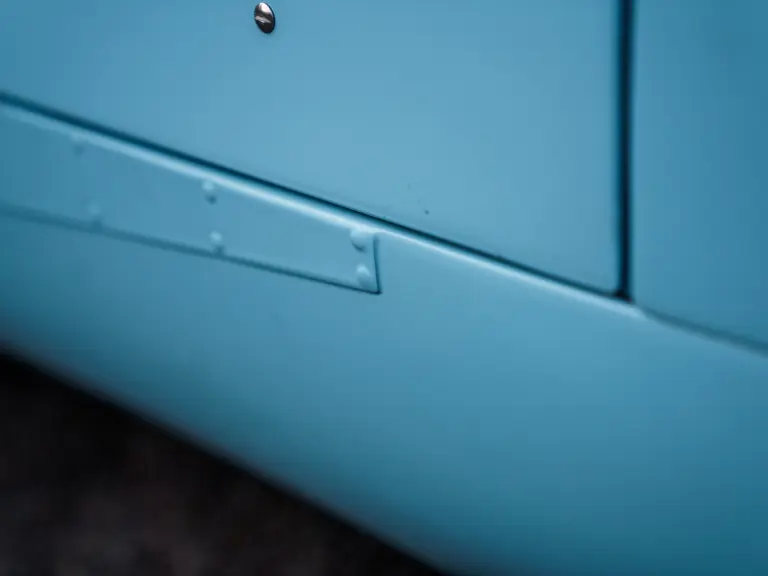
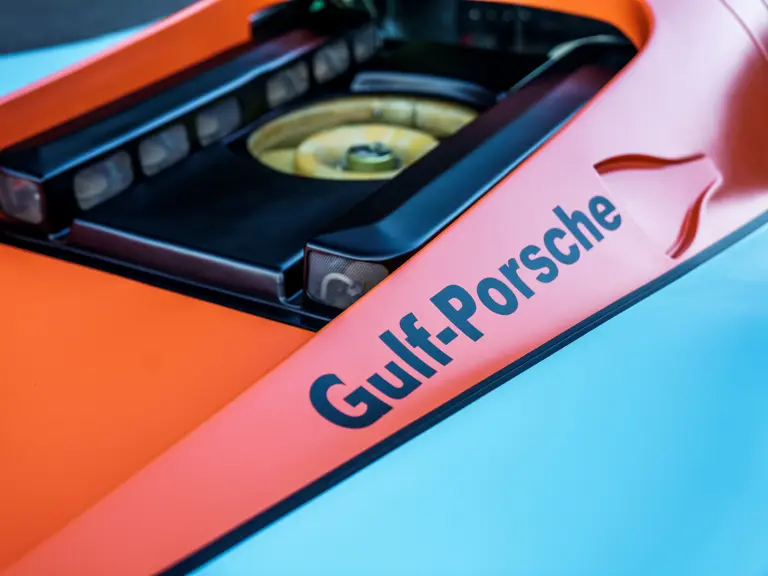
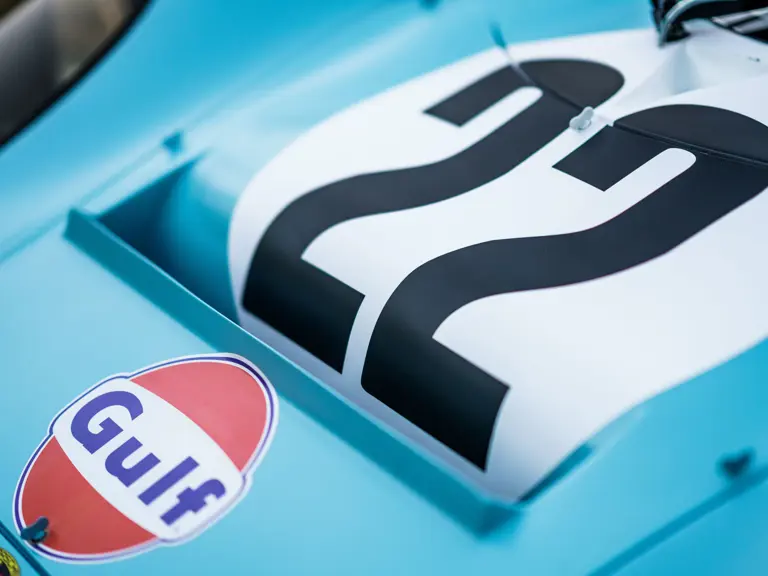
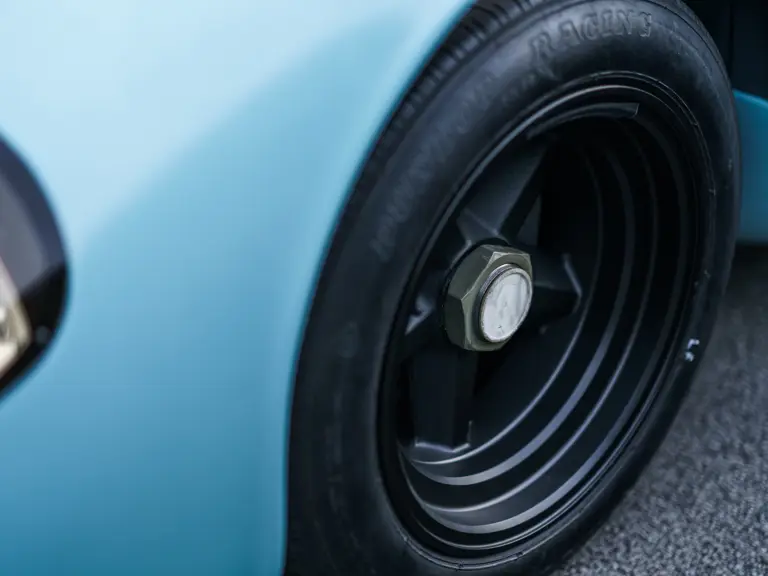
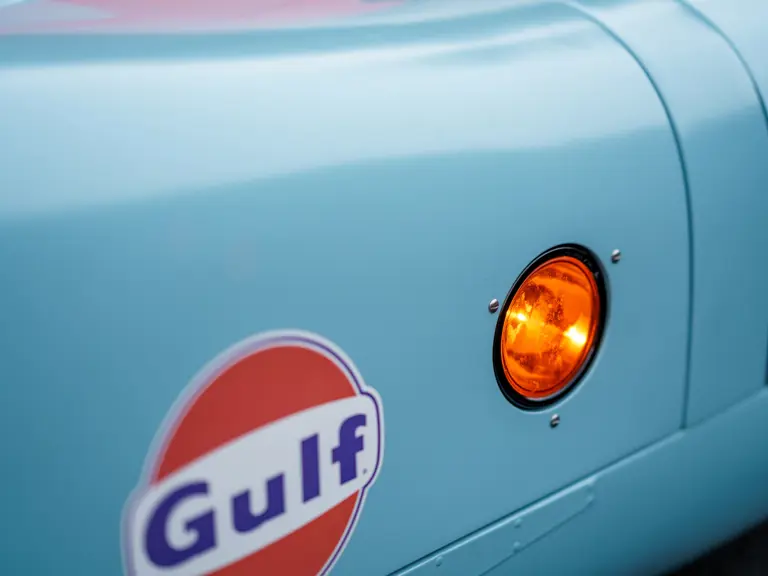
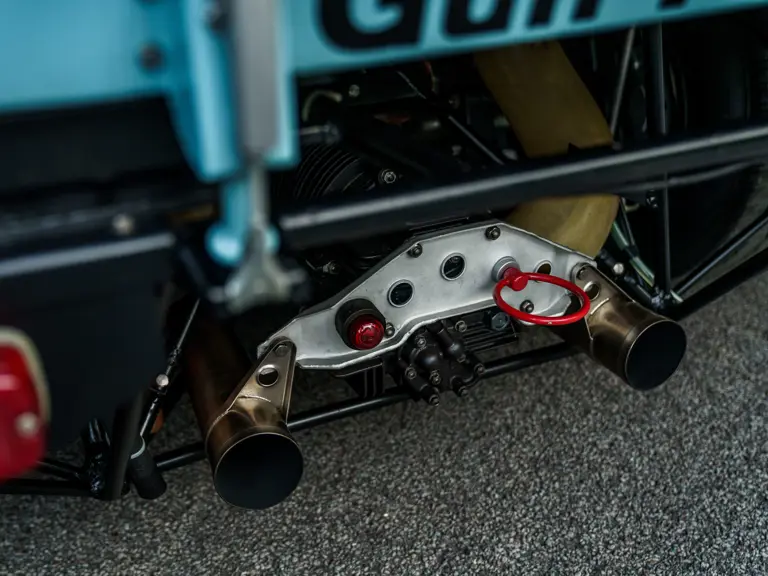
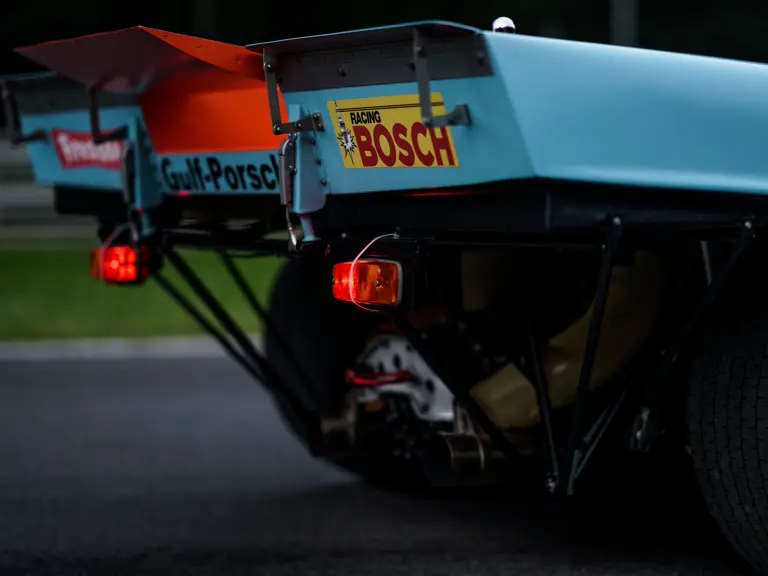


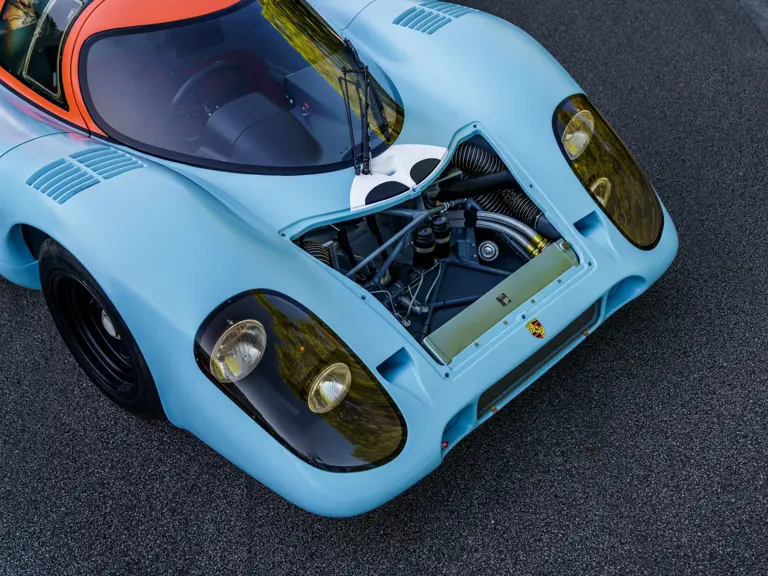
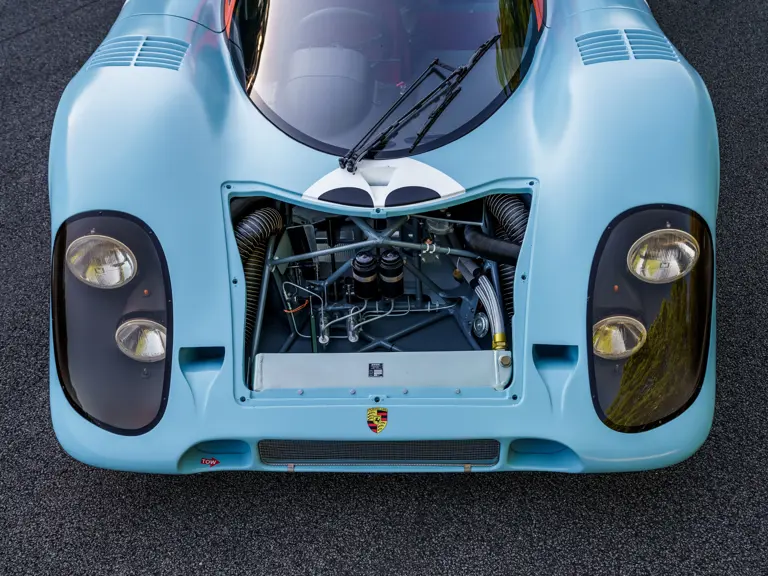
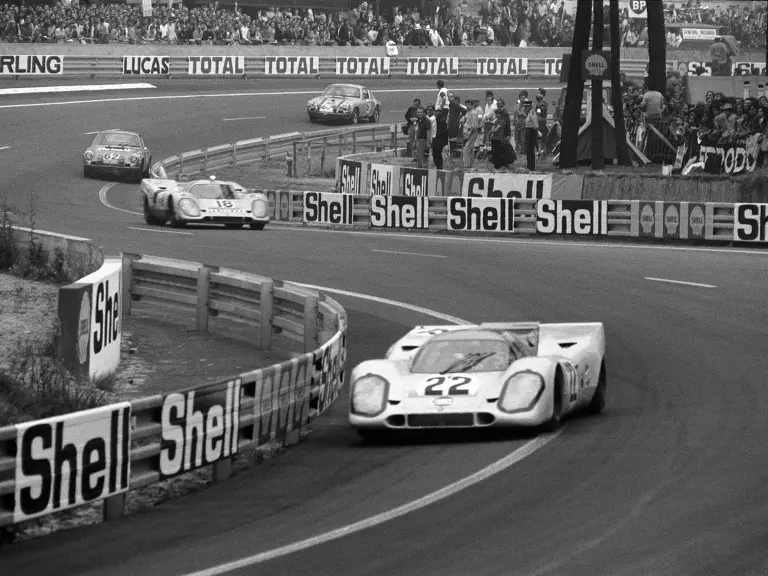

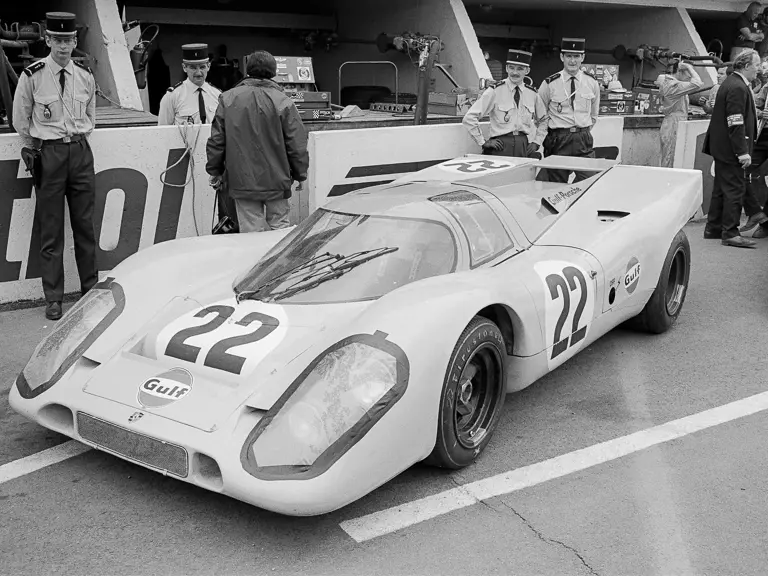
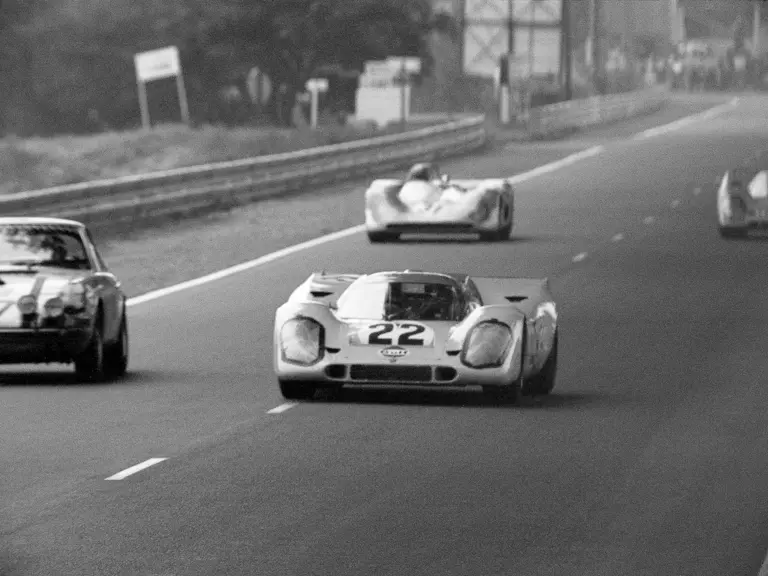
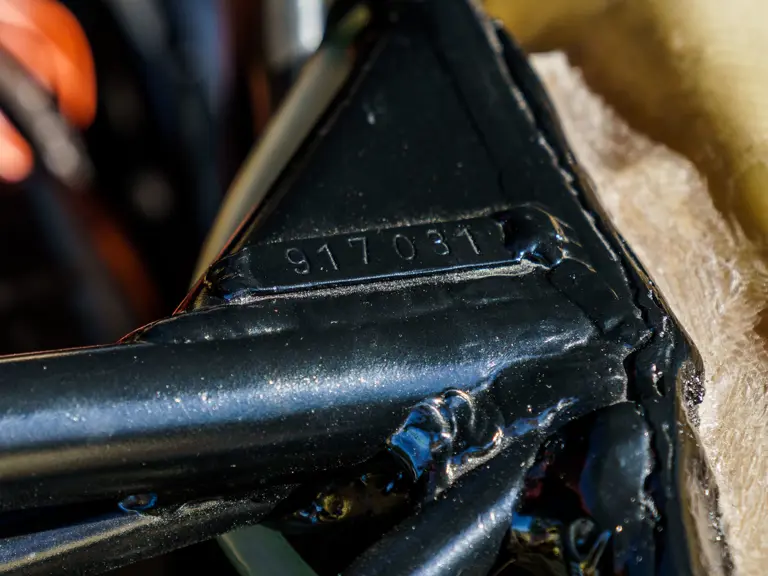

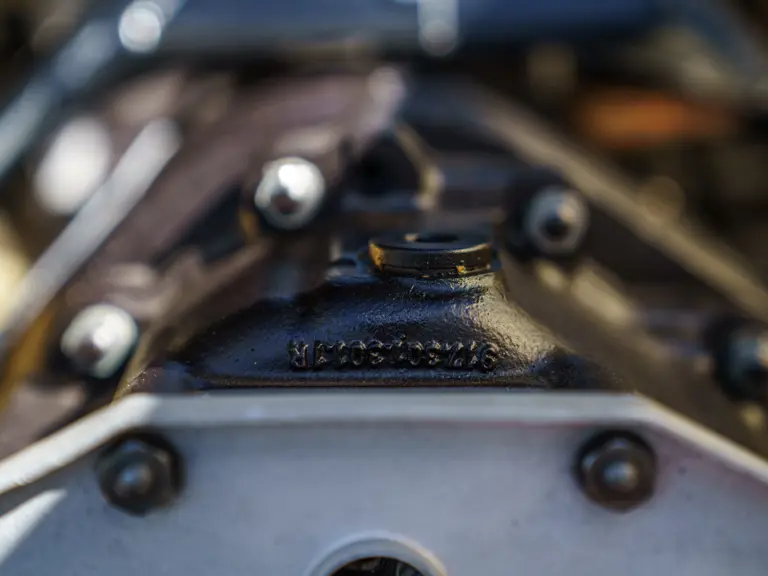

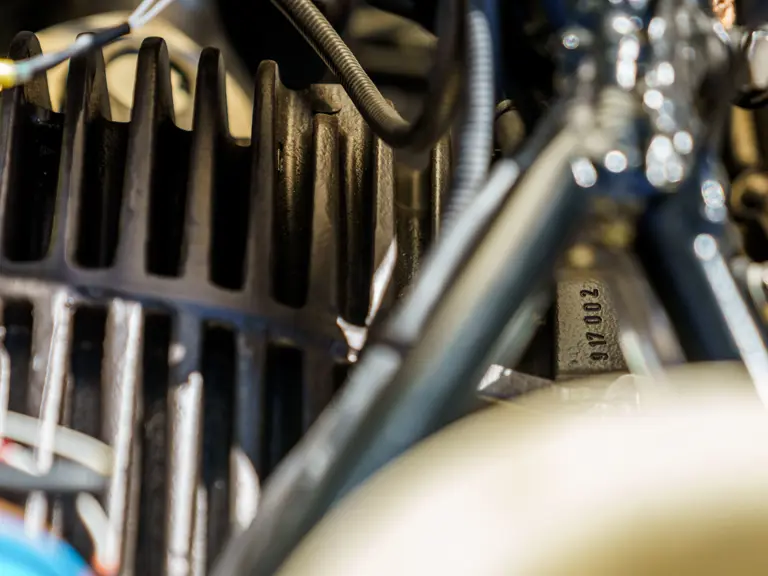
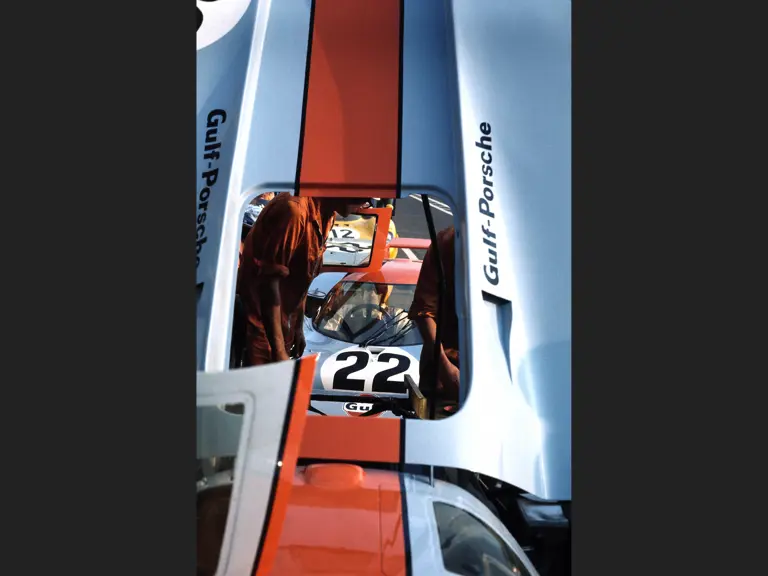
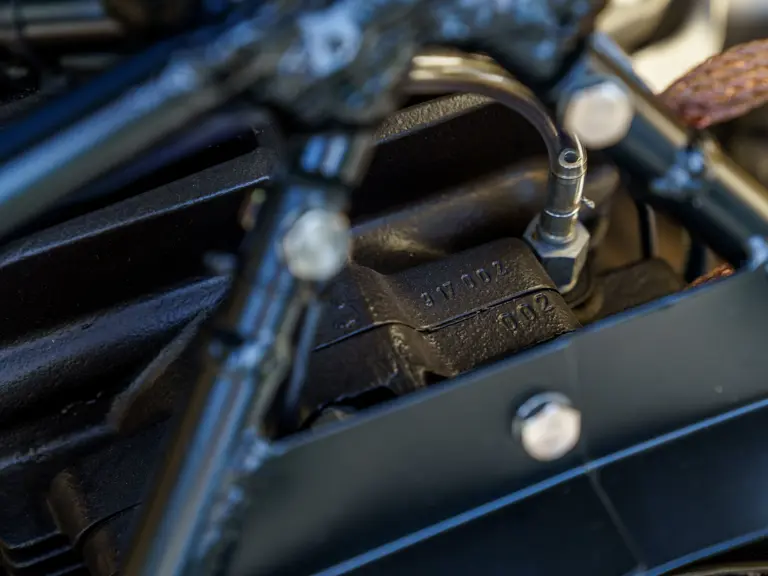



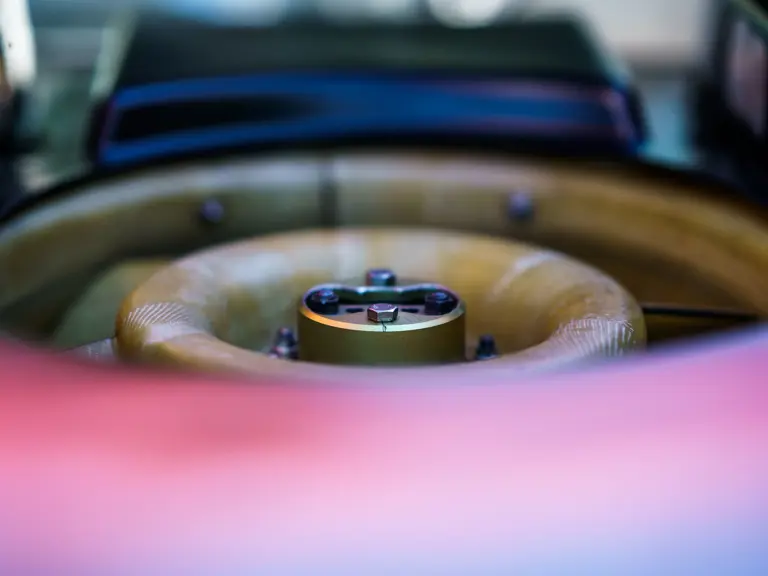

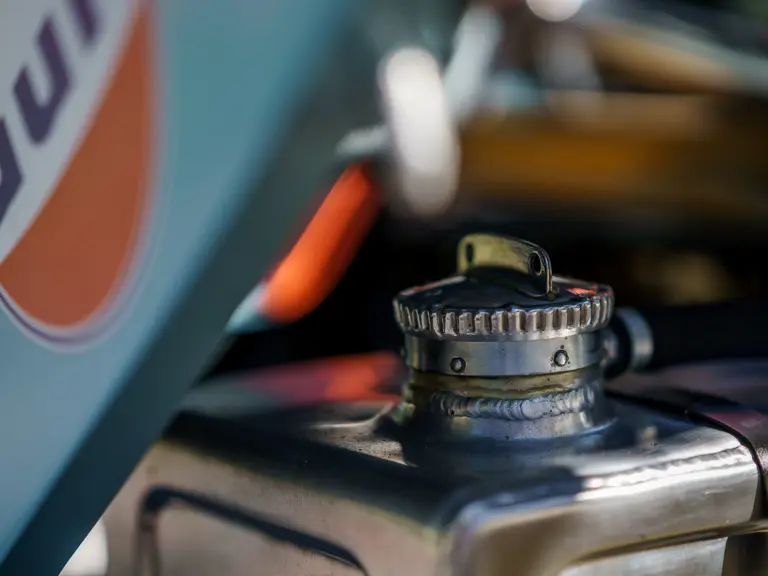
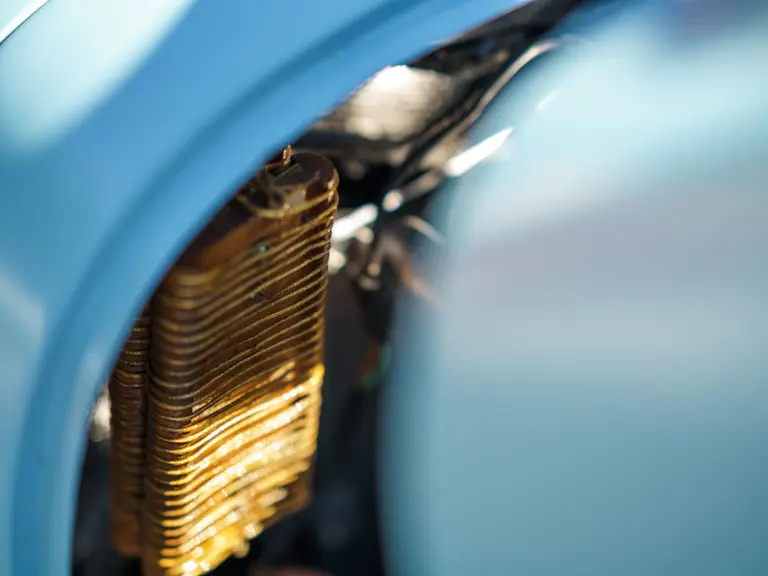
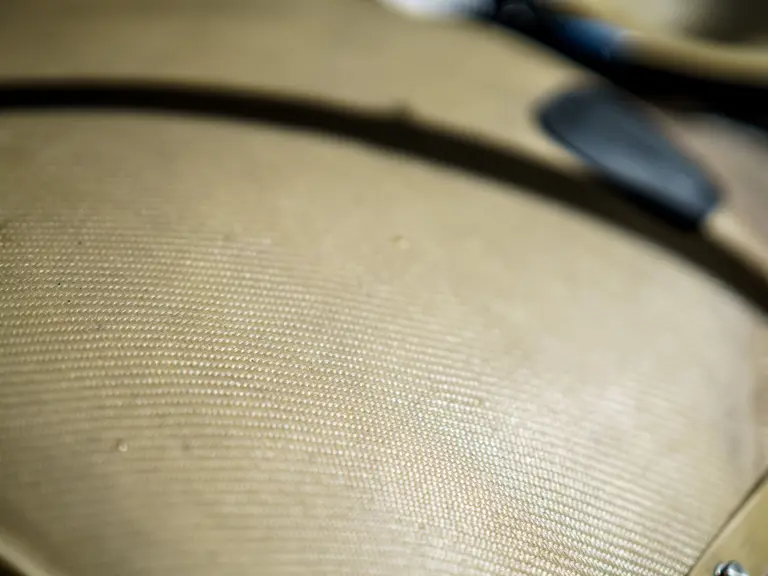
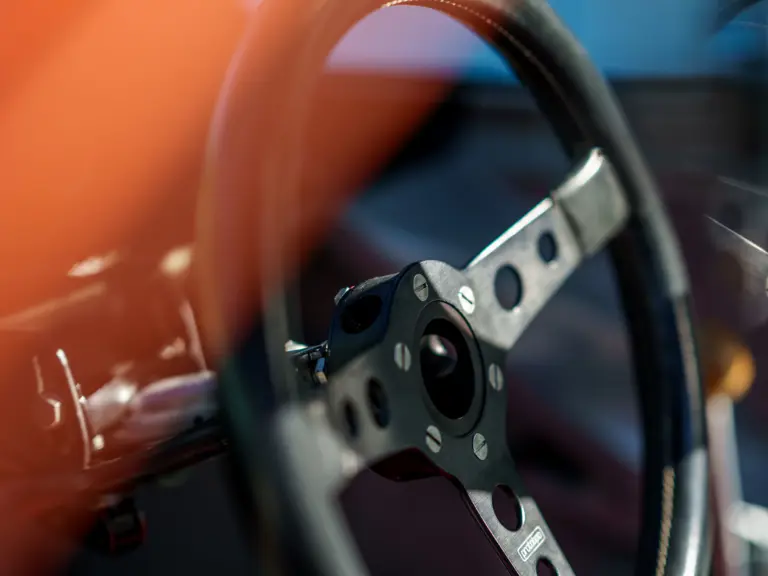
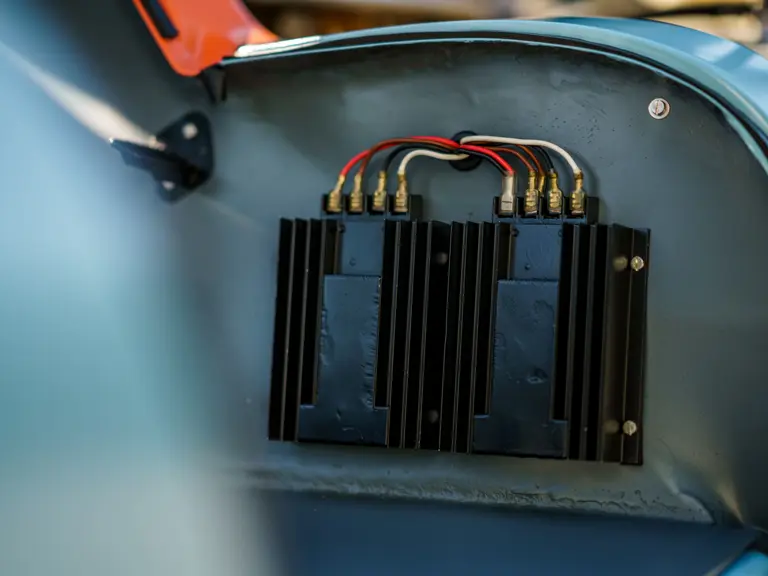


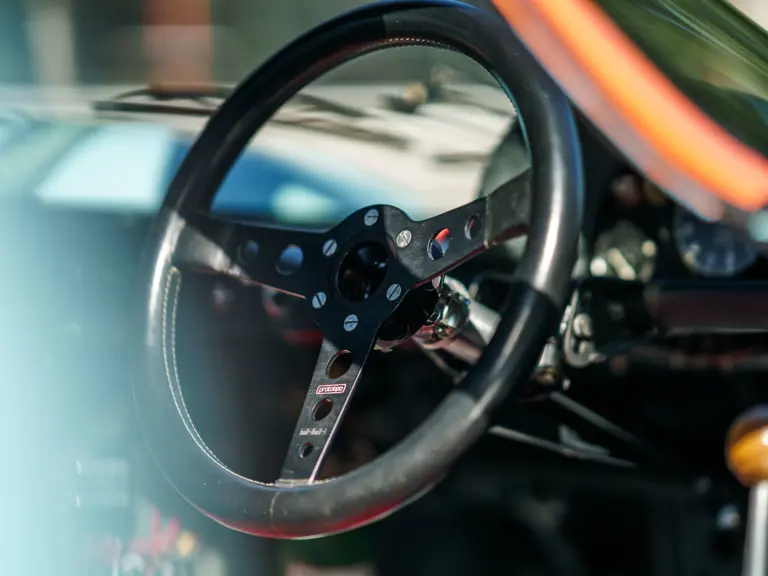
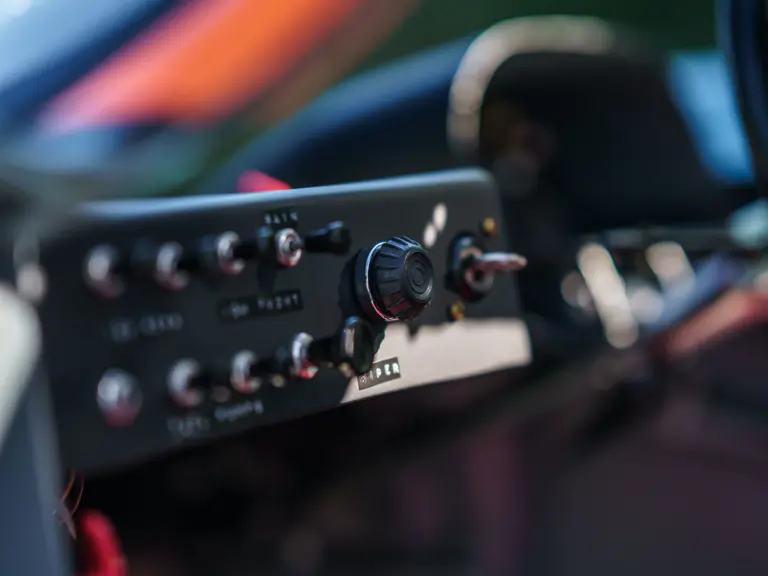
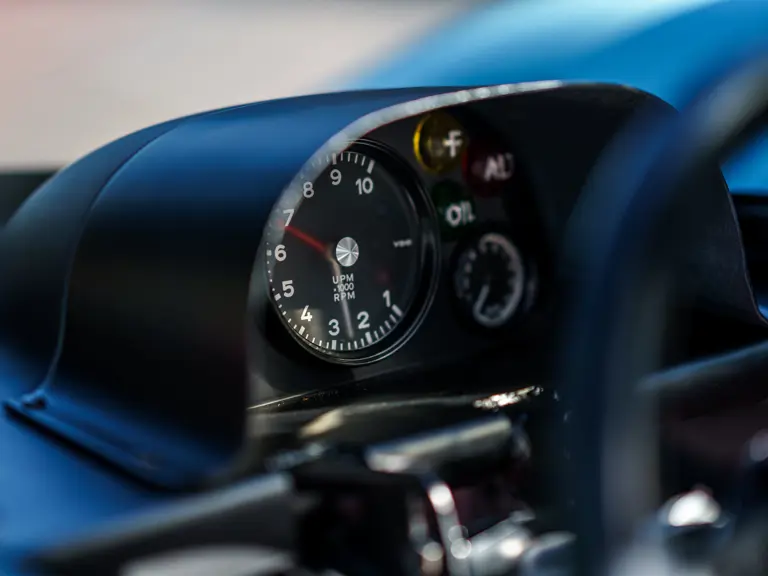

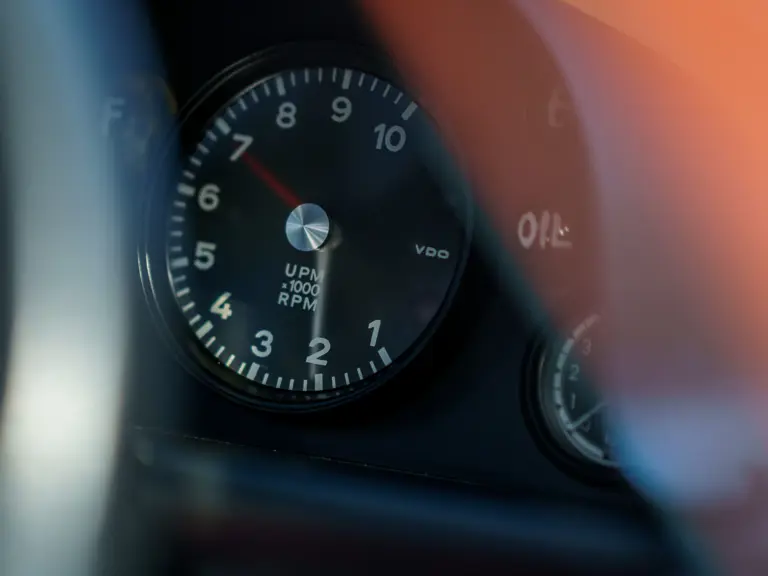
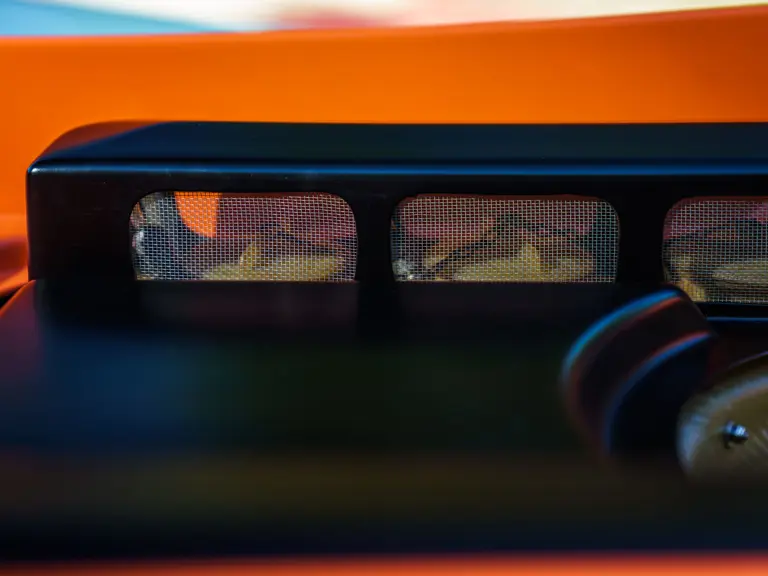

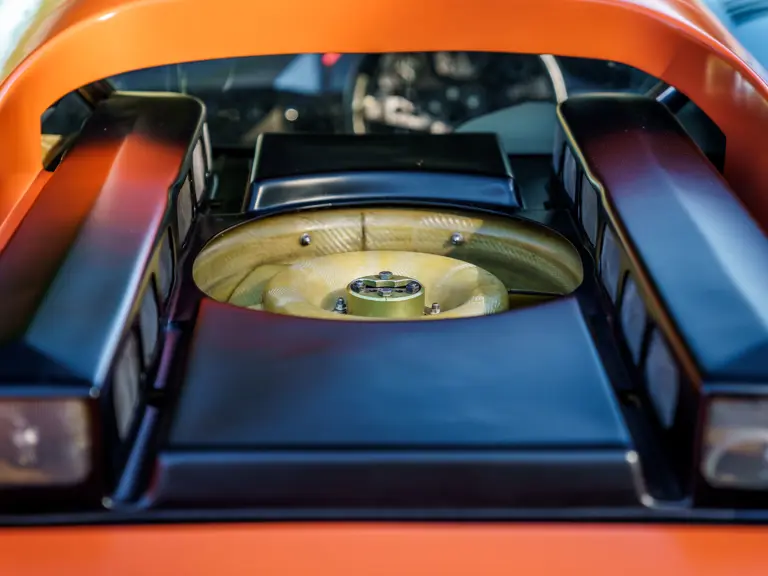
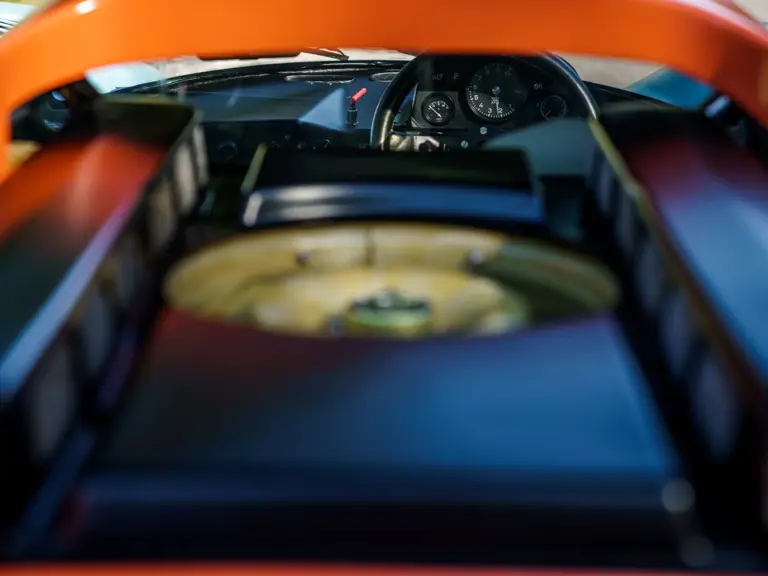
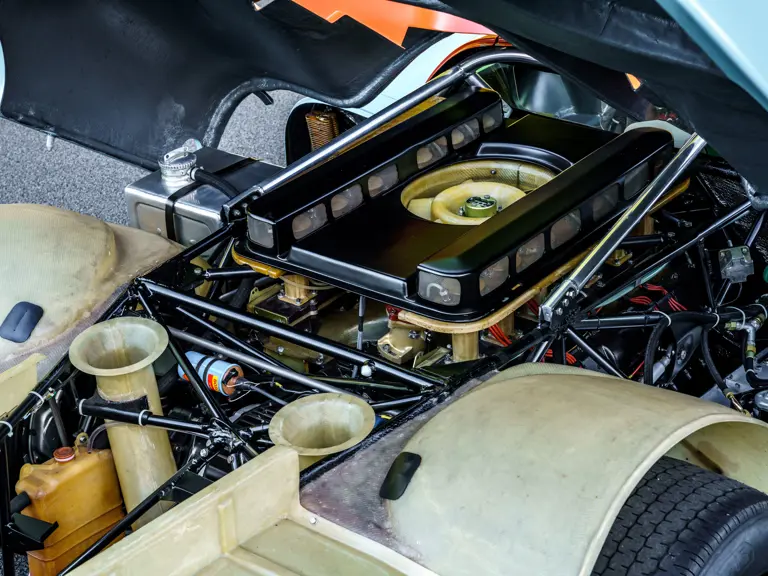
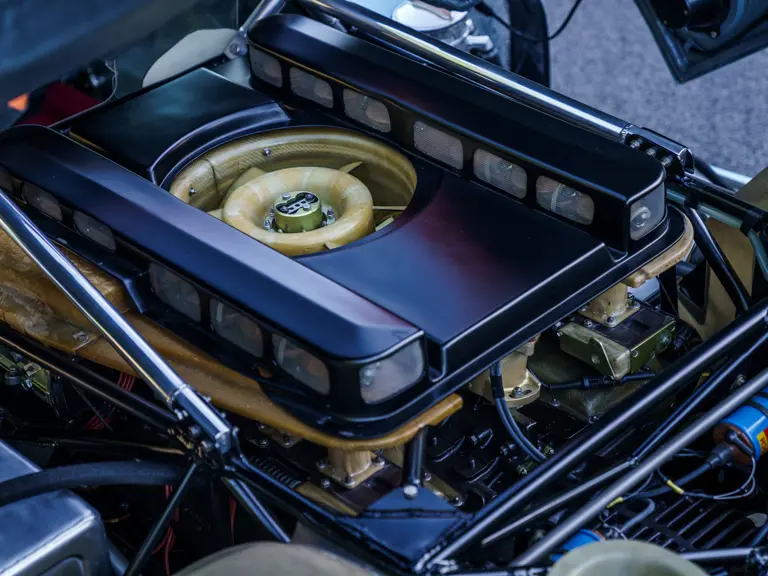
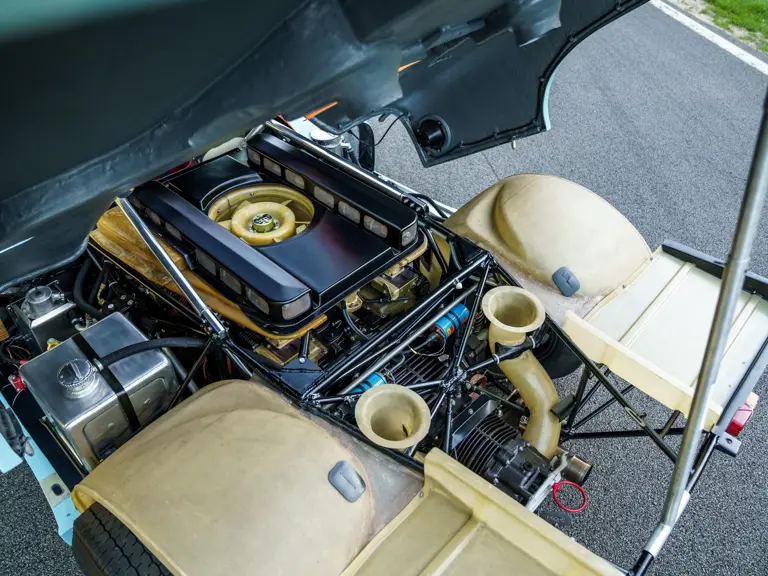
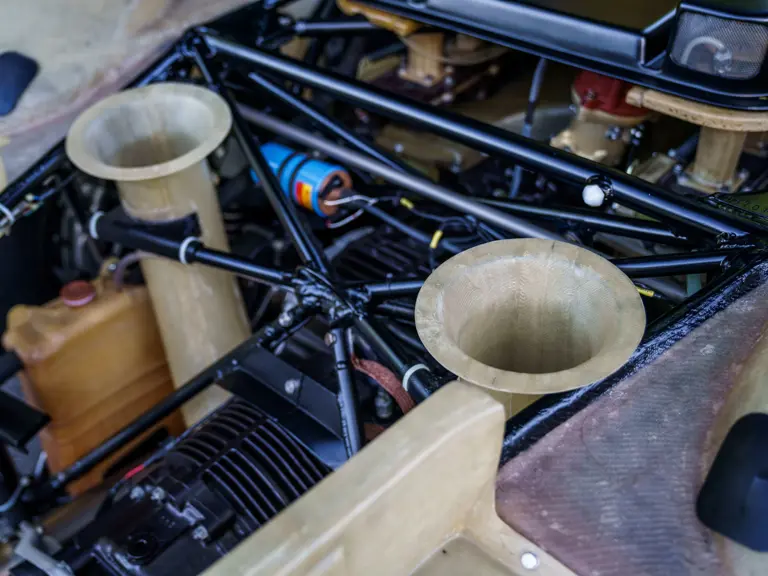
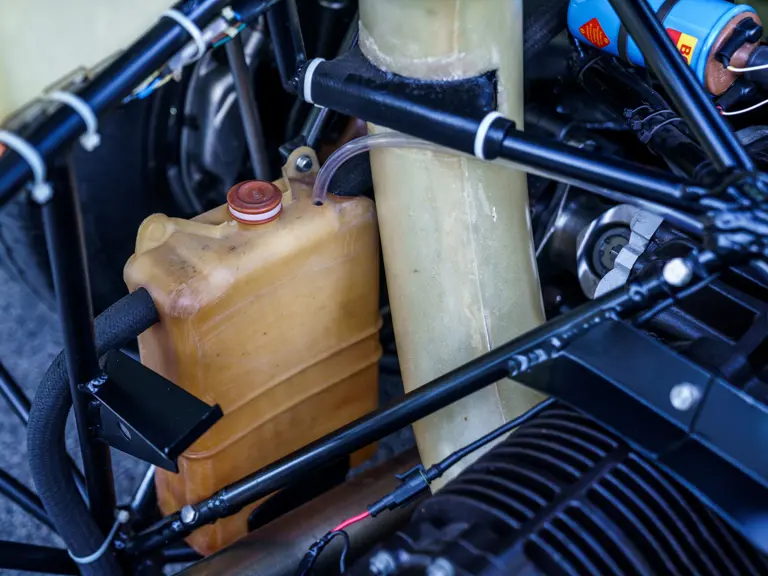
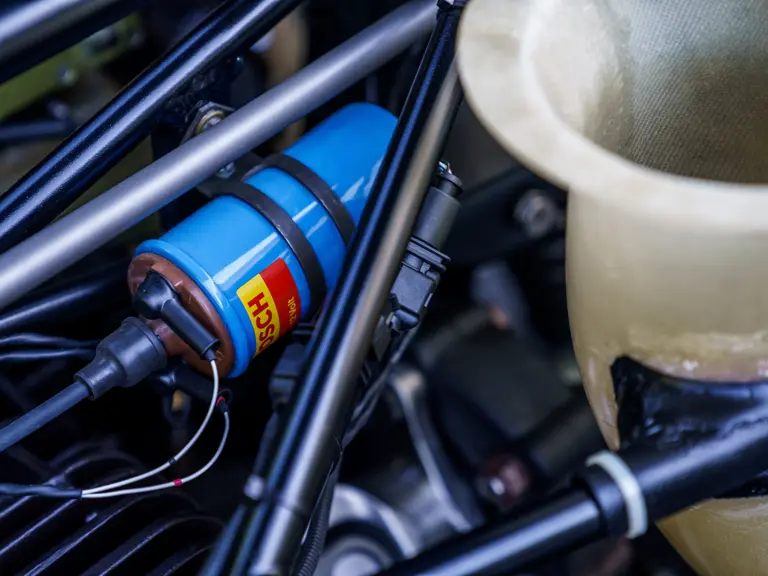


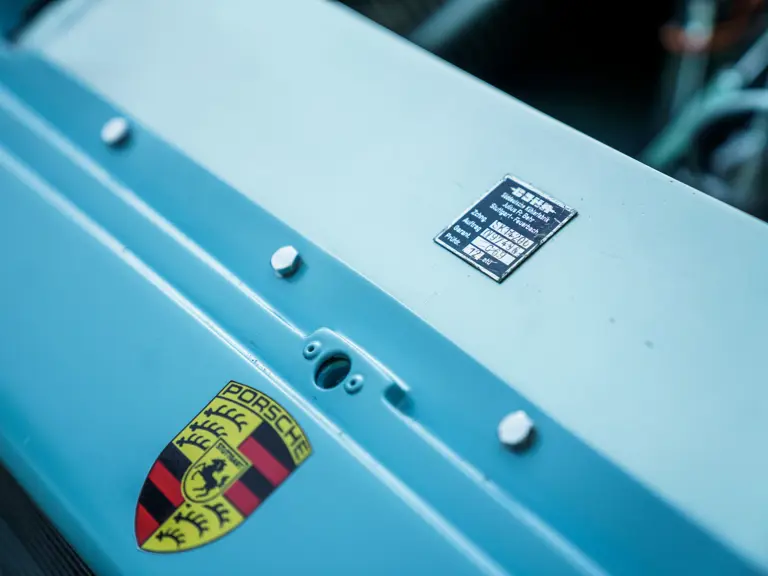



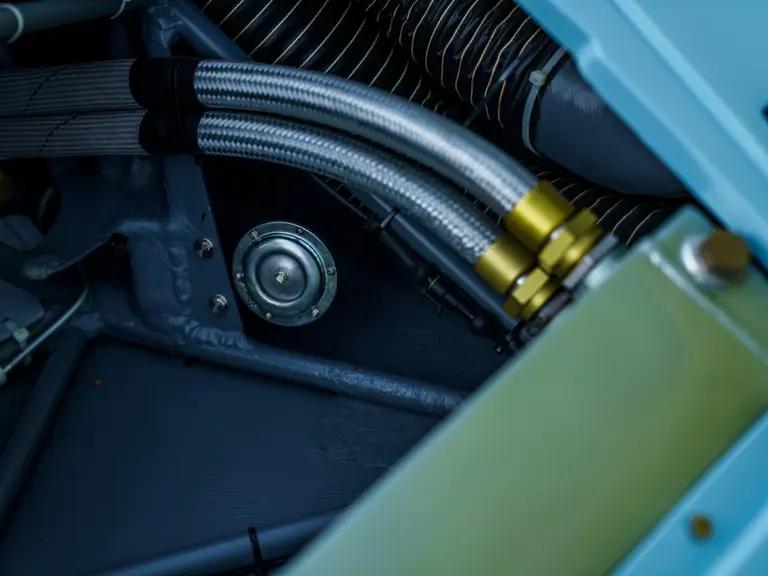
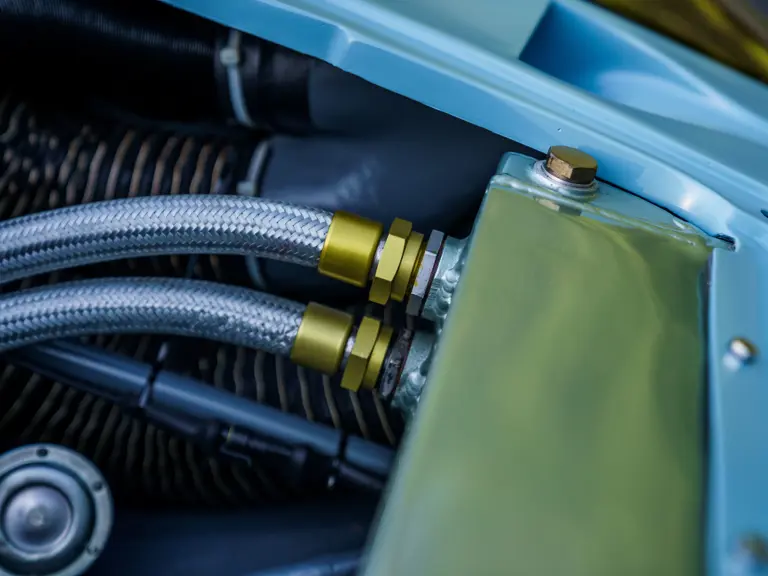
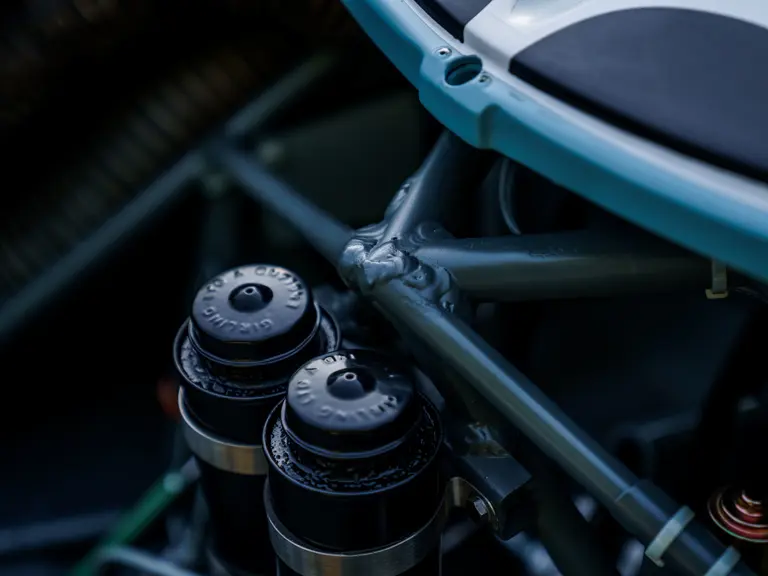
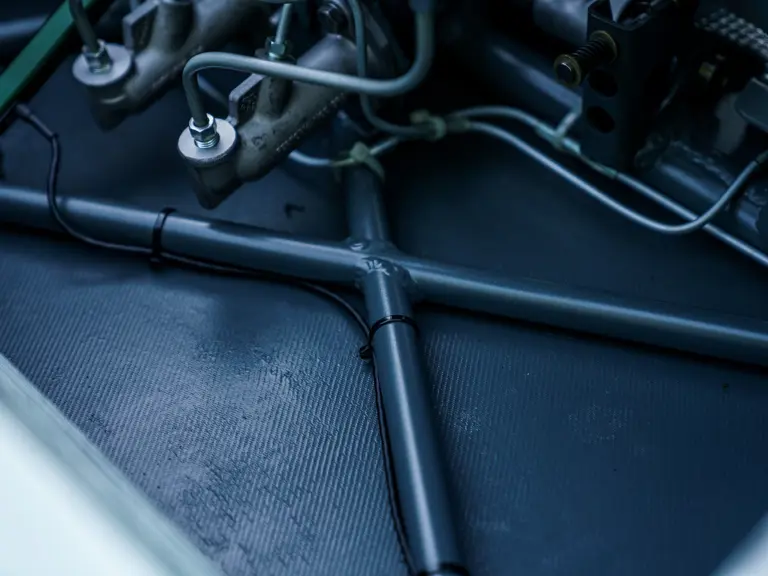


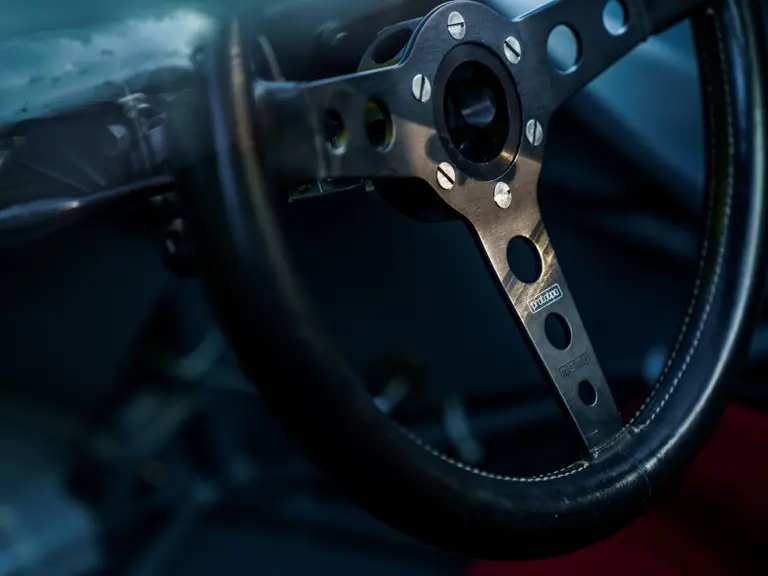
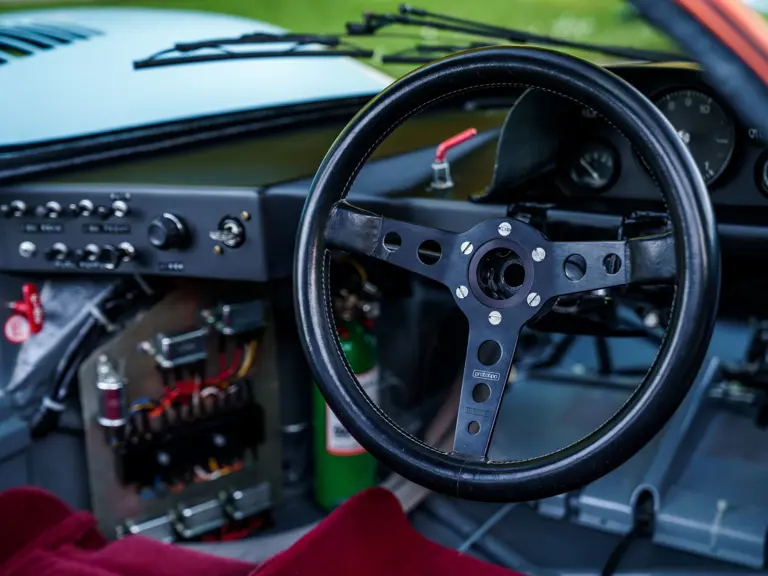


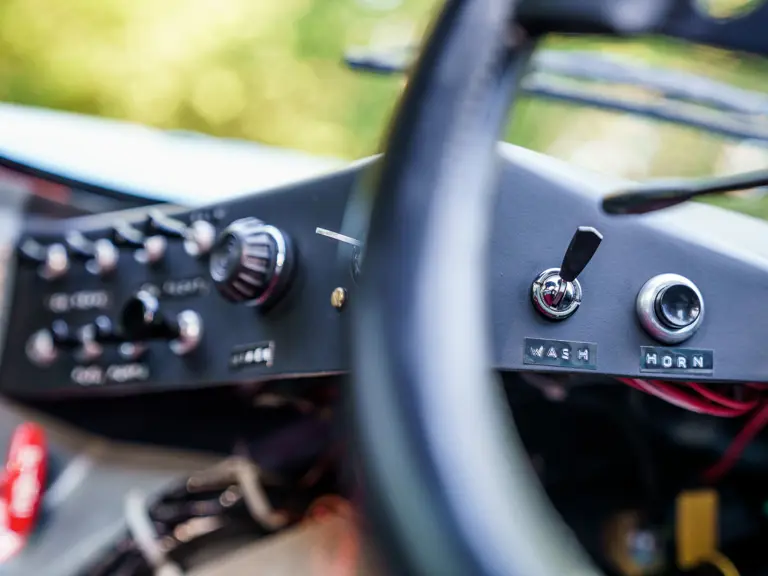
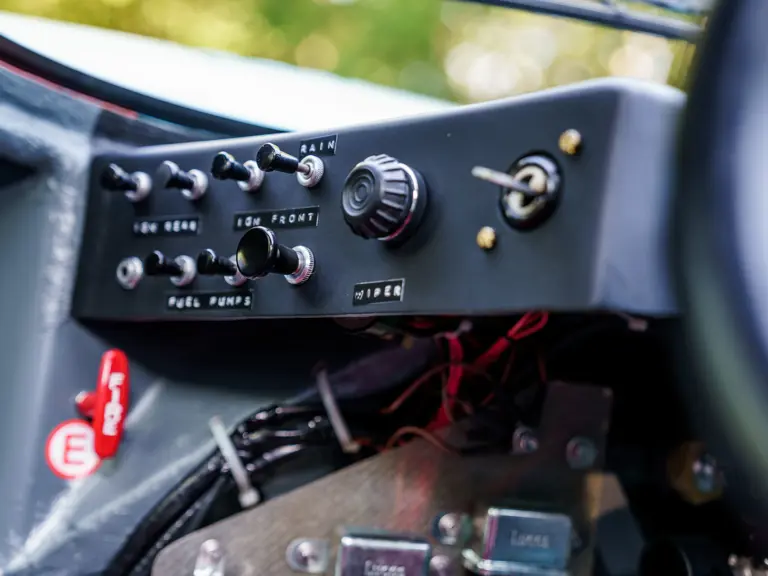

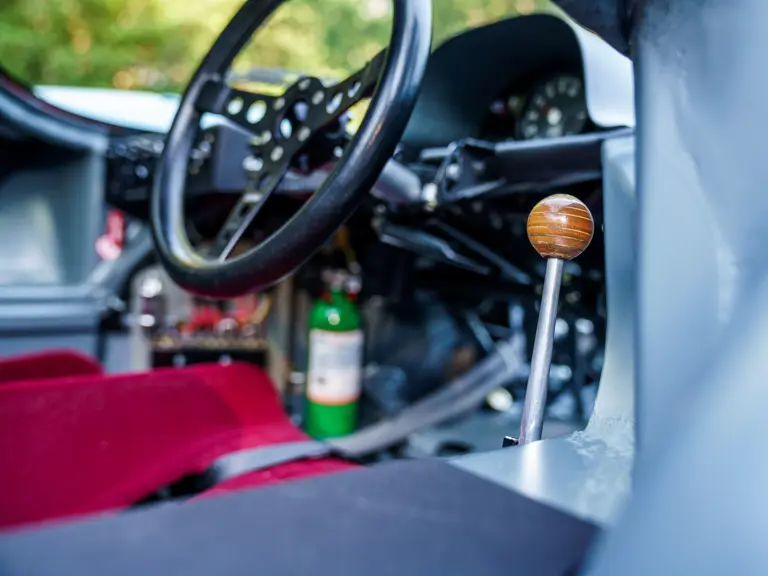
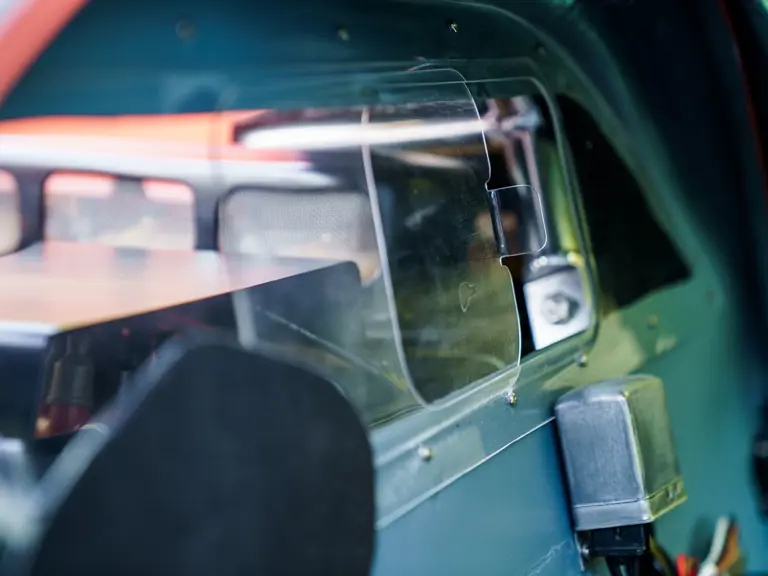
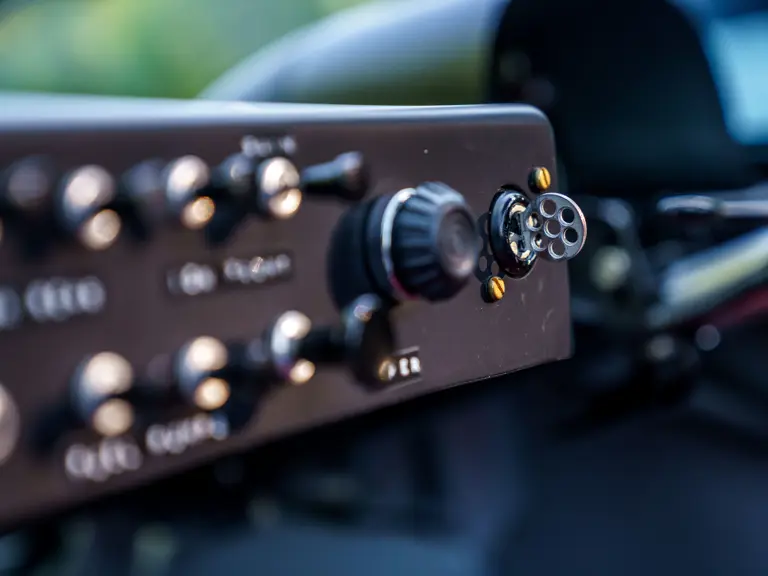
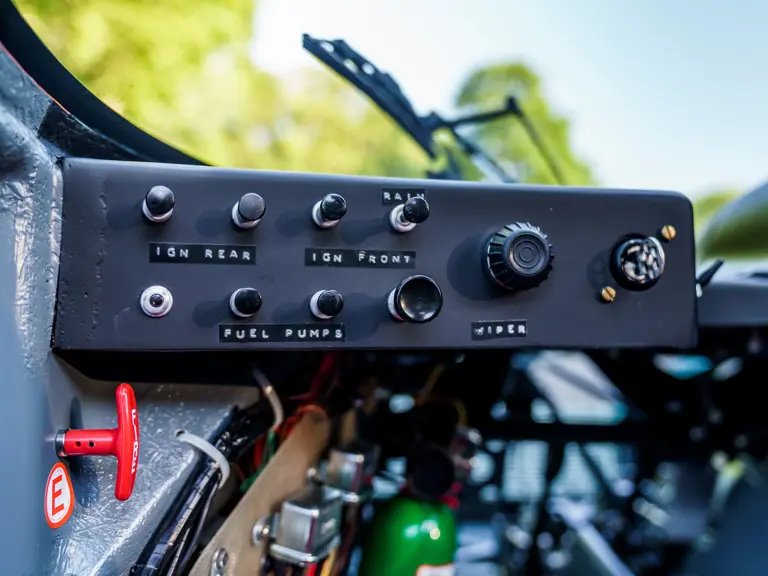
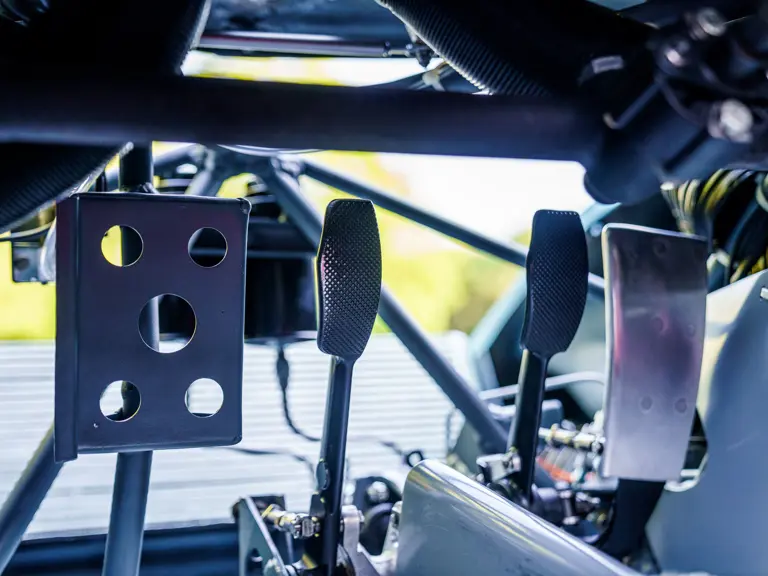
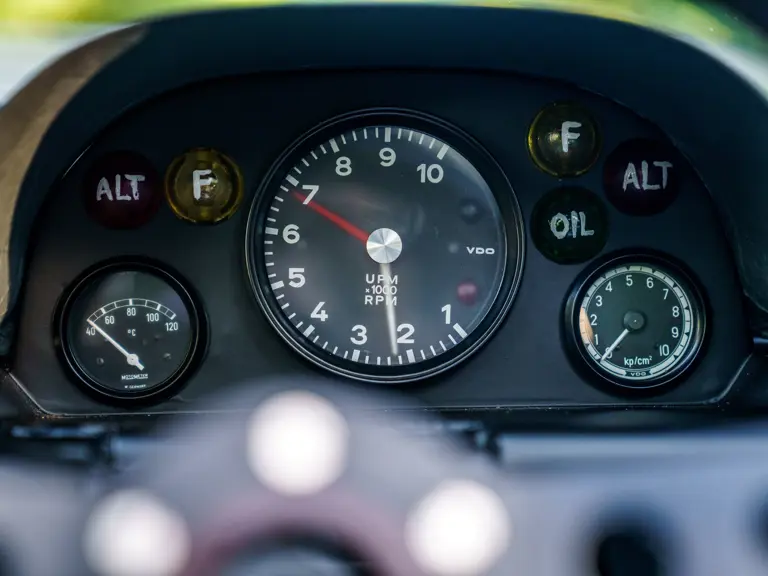
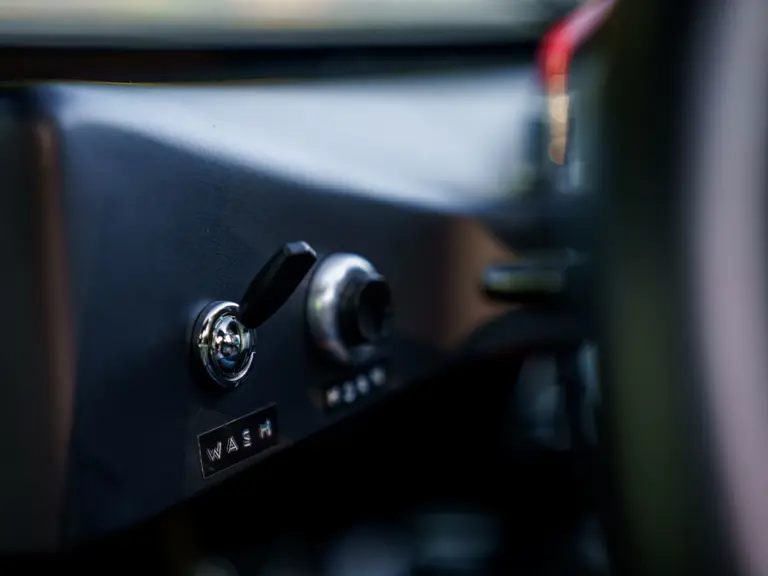
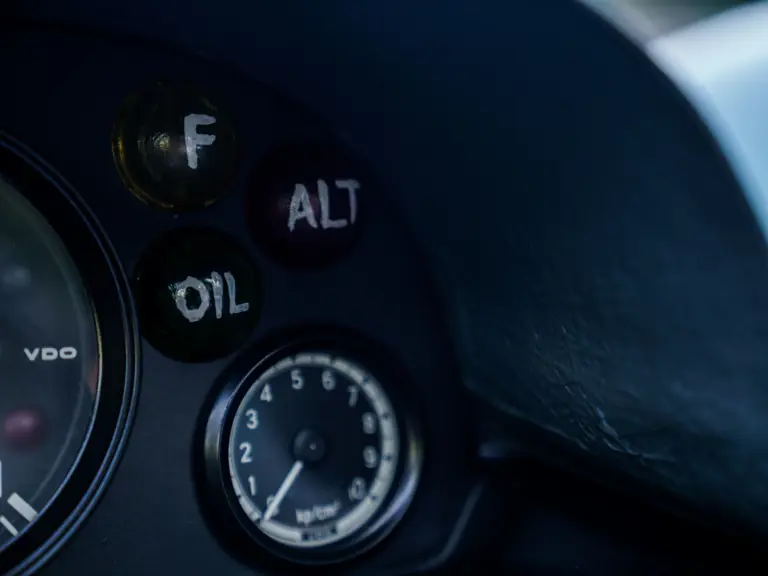
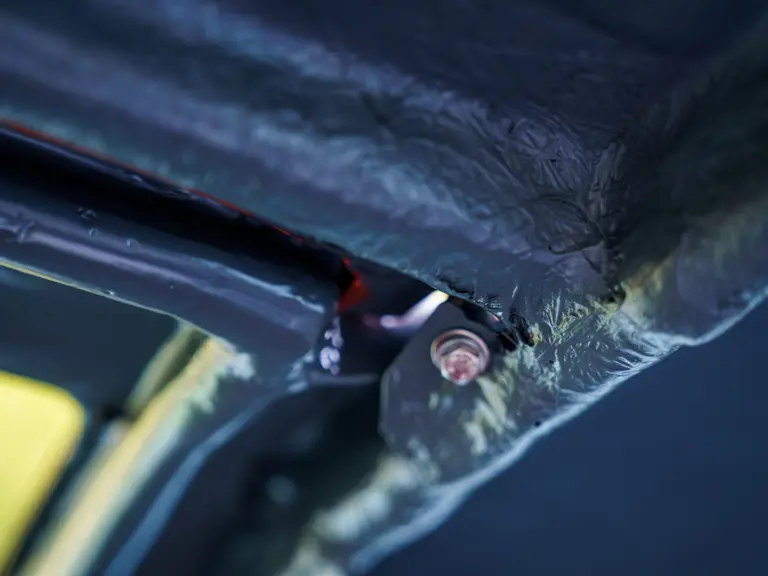
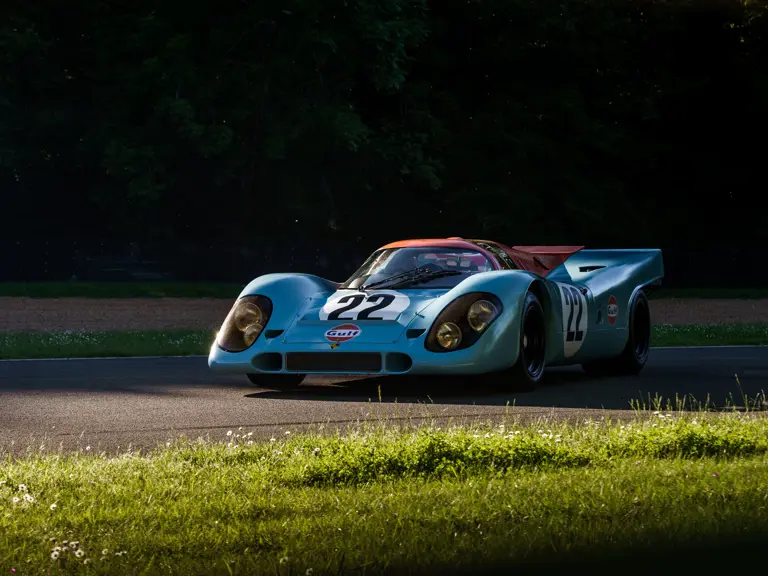
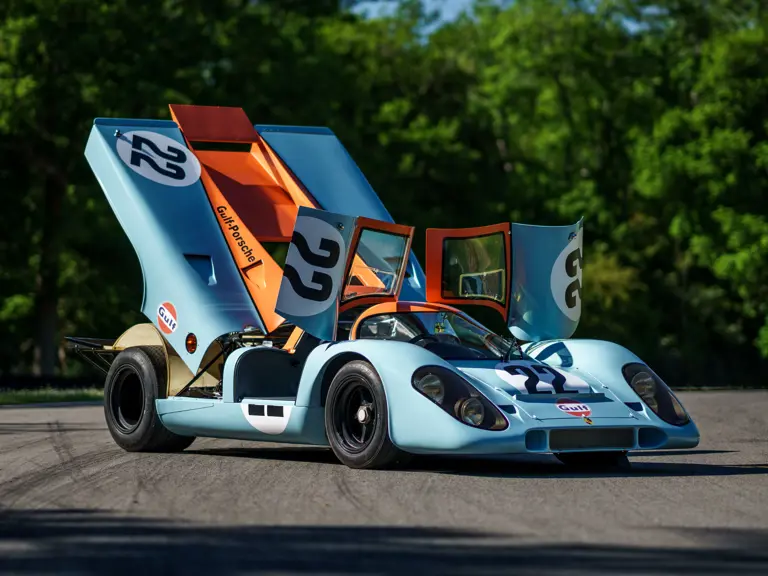
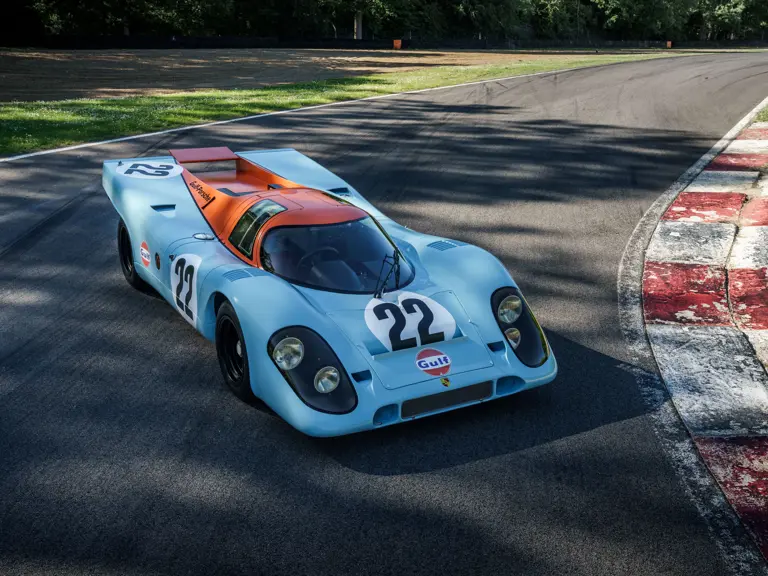

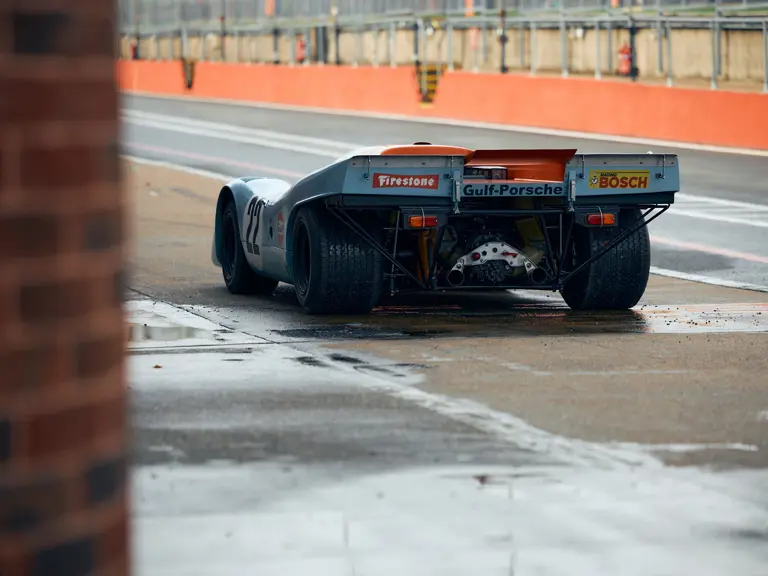
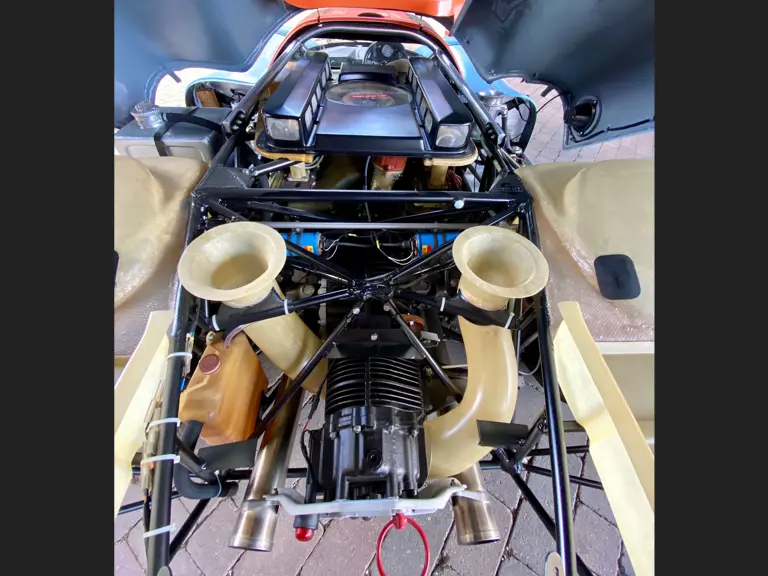
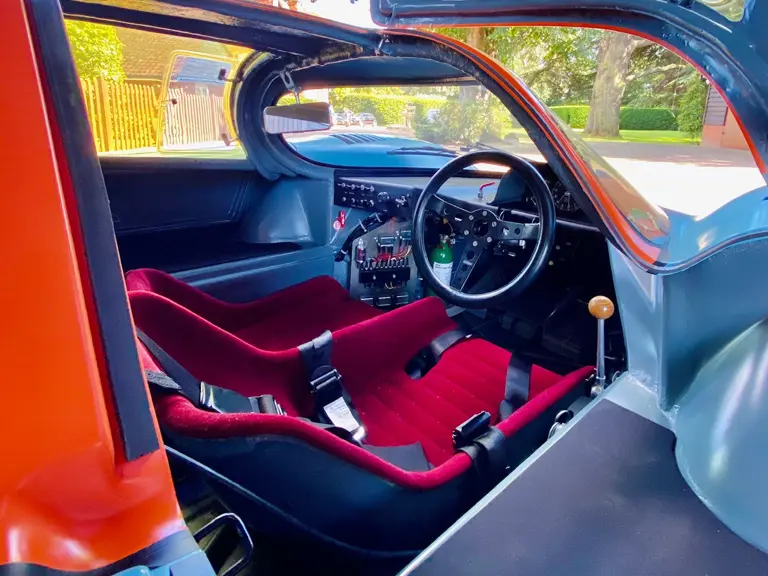
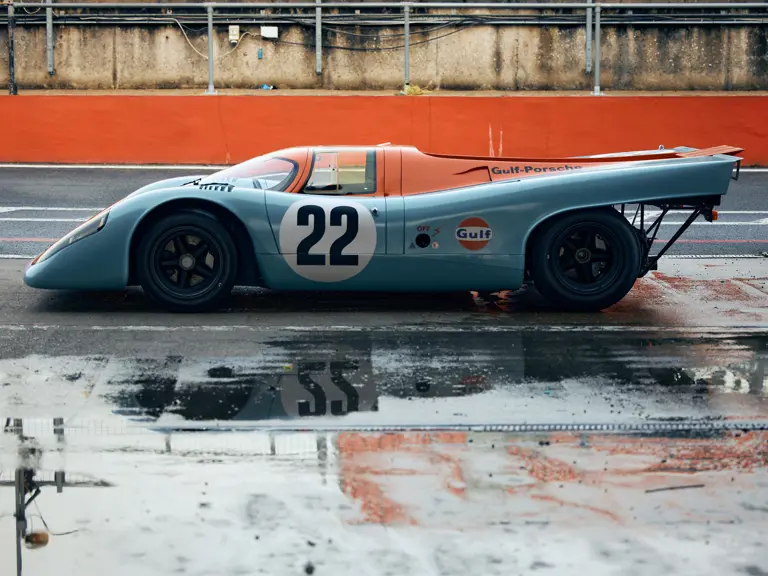


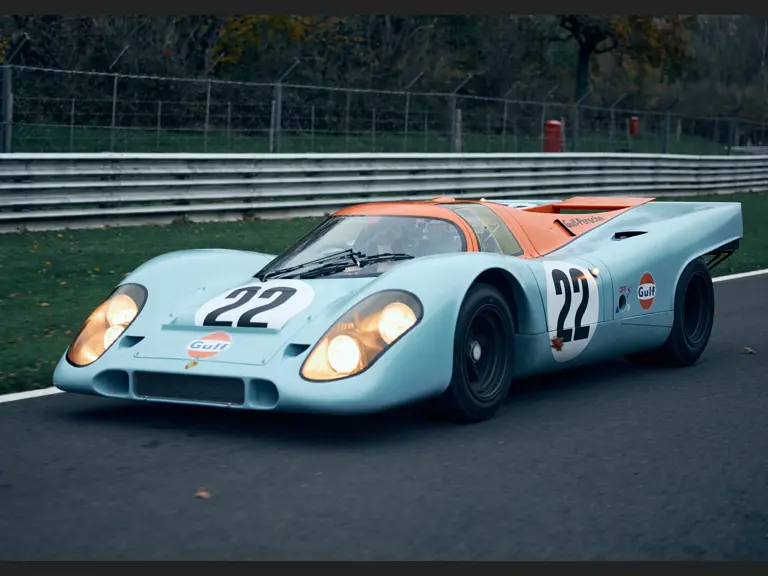
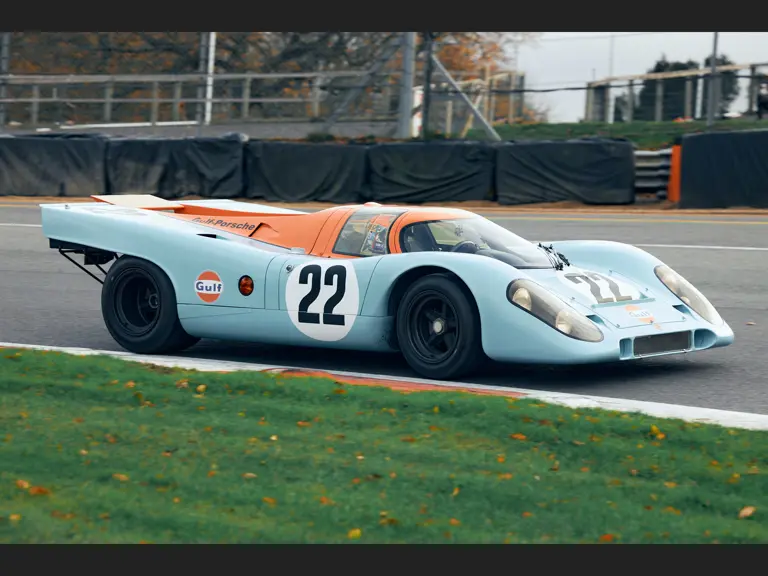
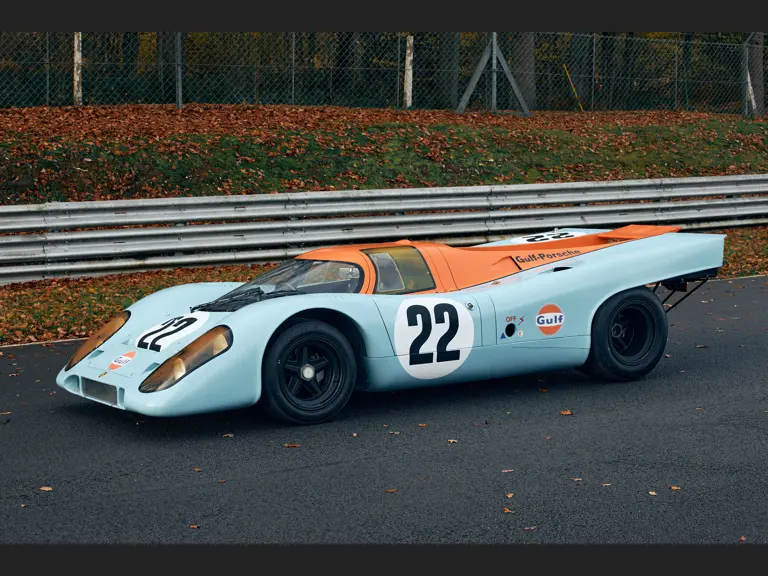
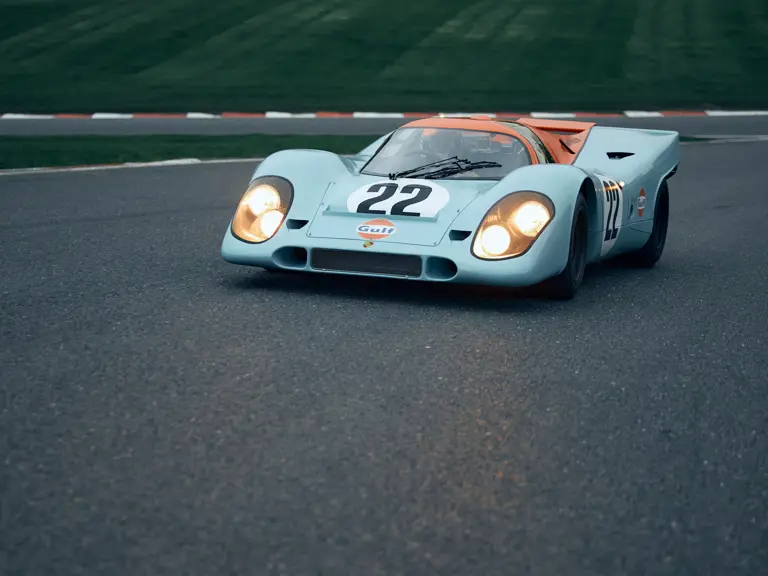
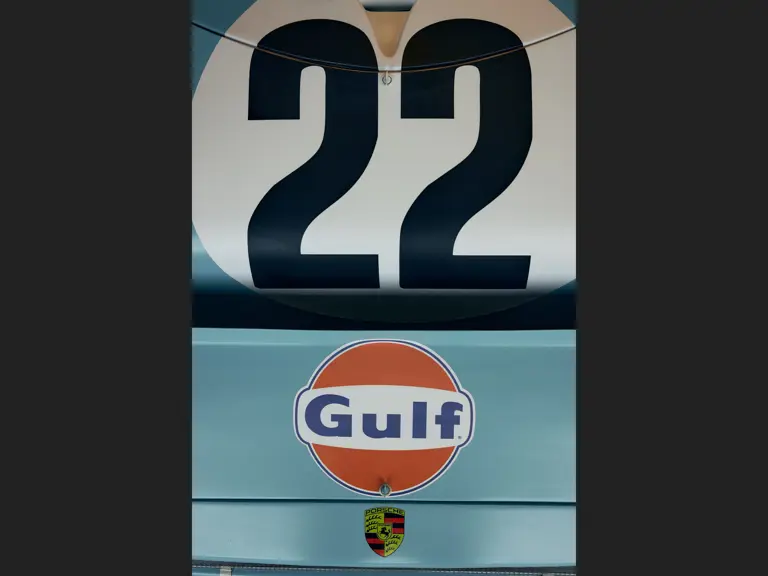
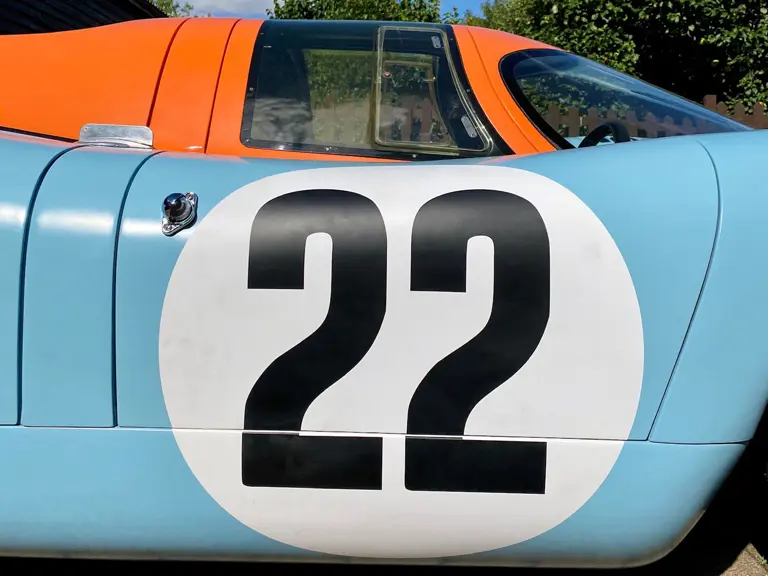
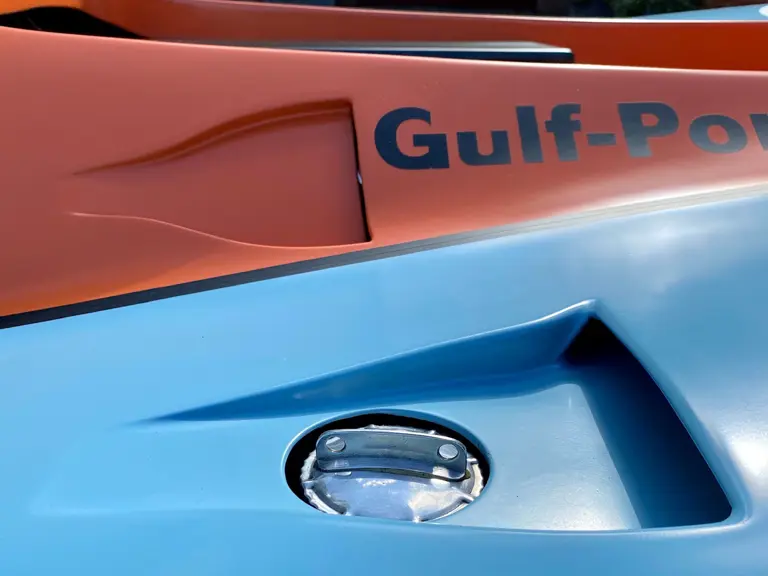
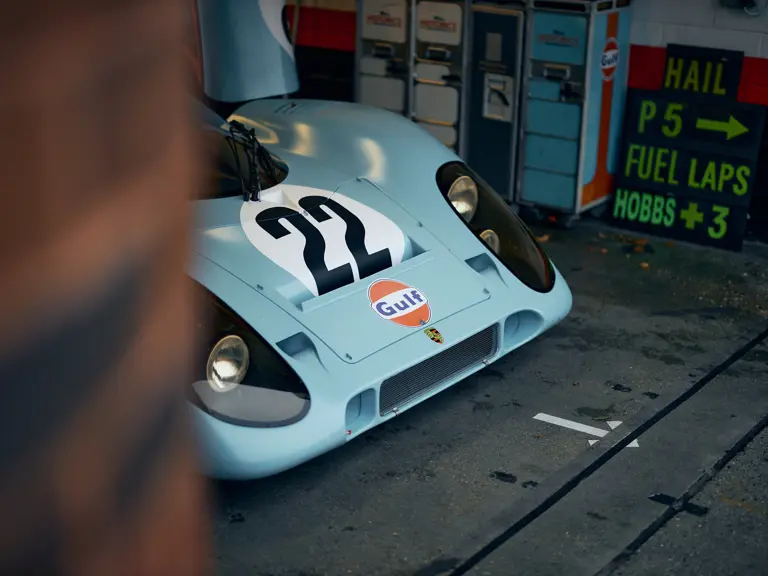
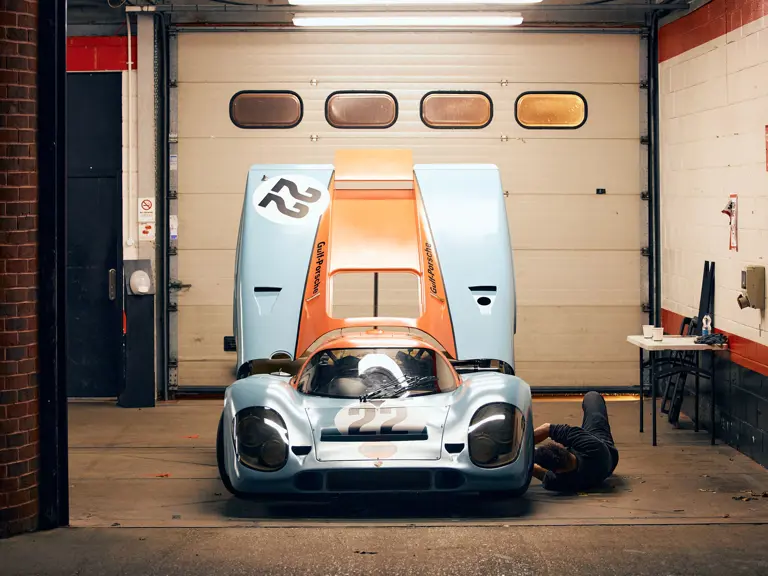
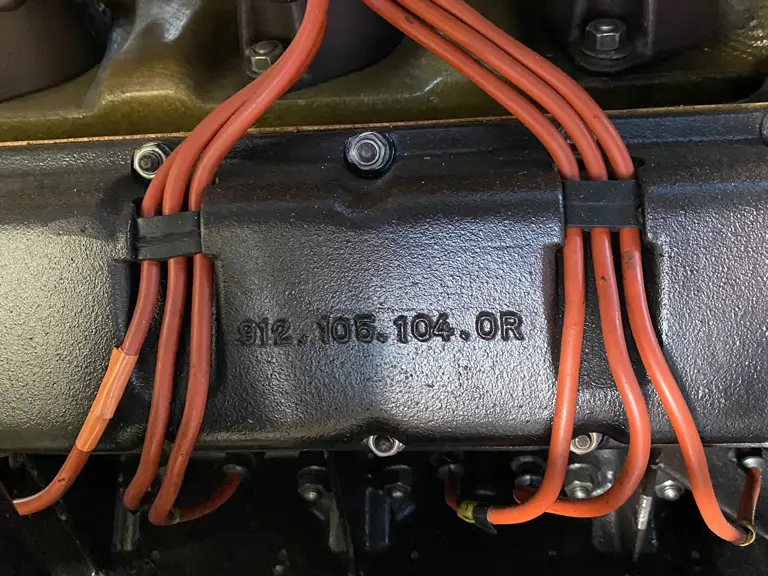
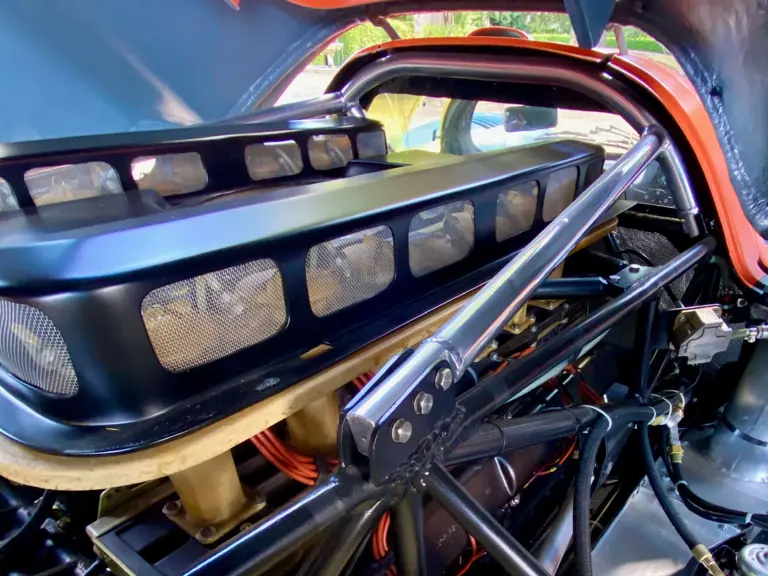

 | Monterey, California
| Monterey, California
